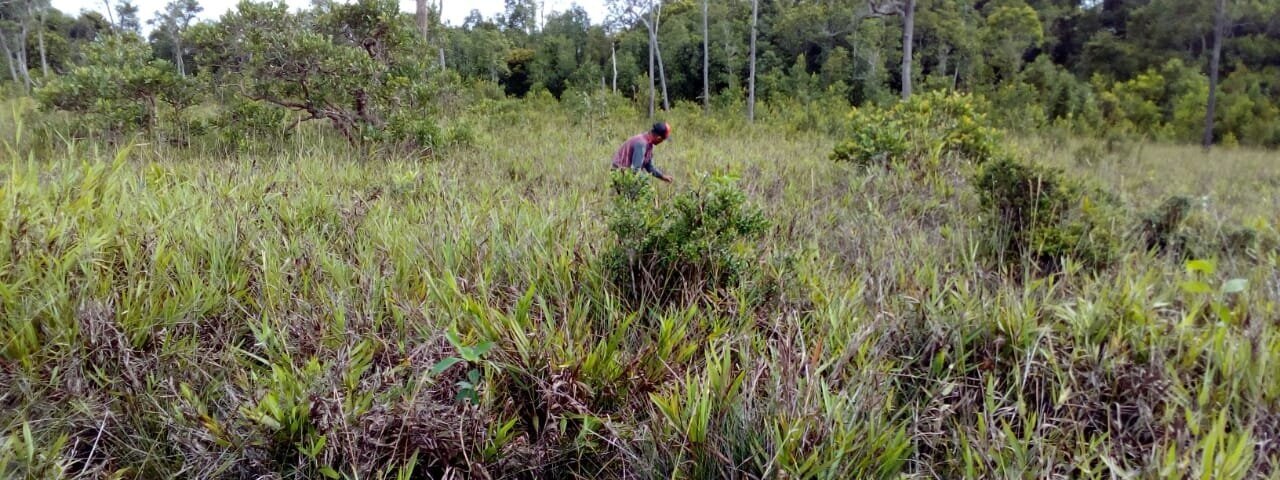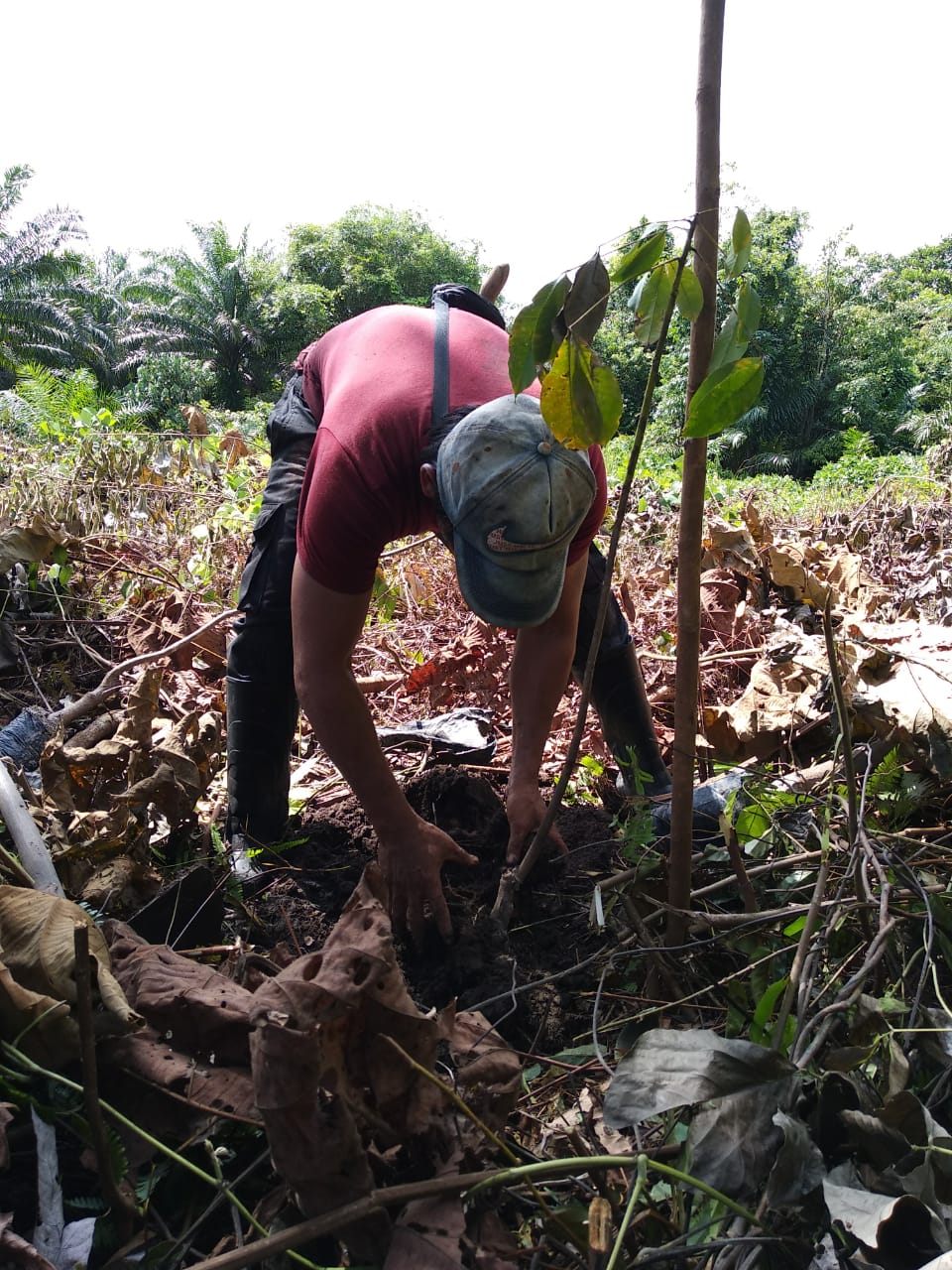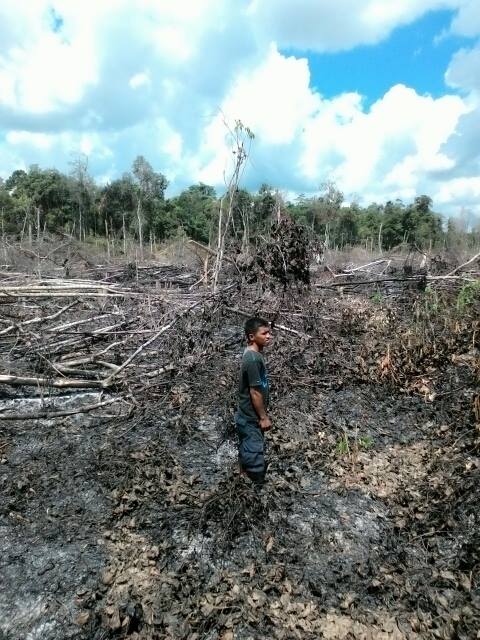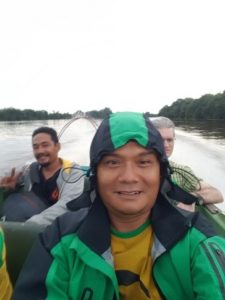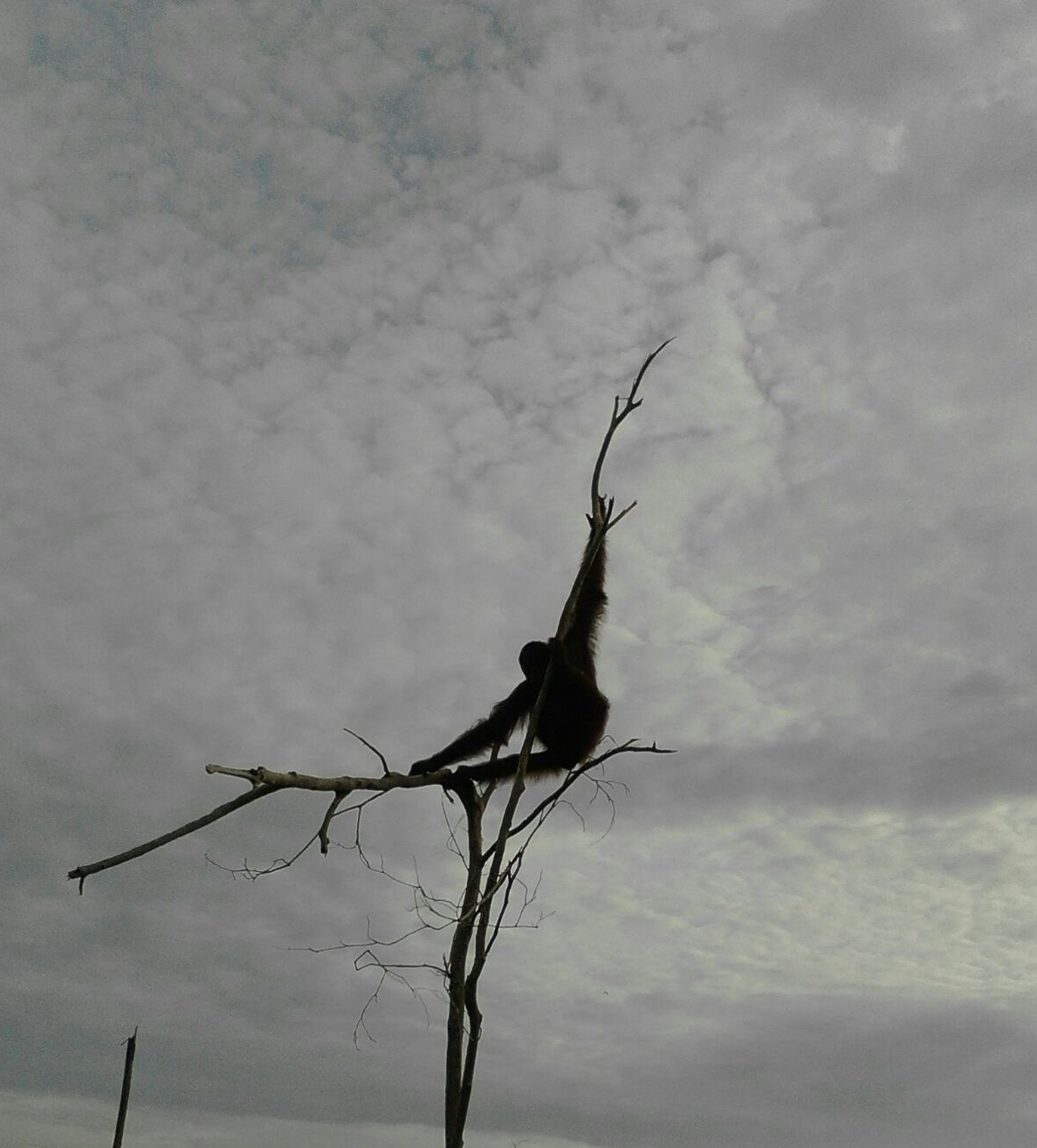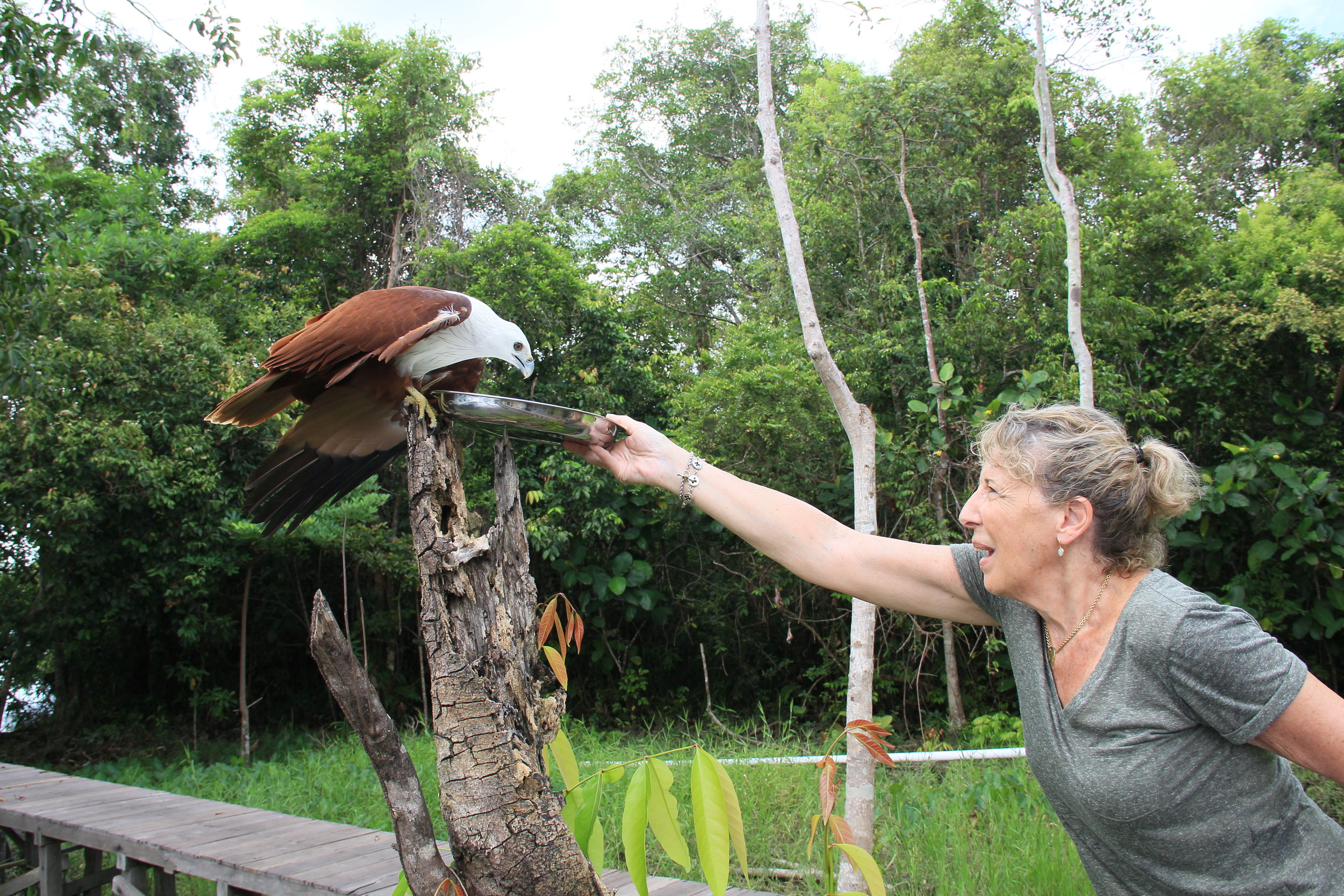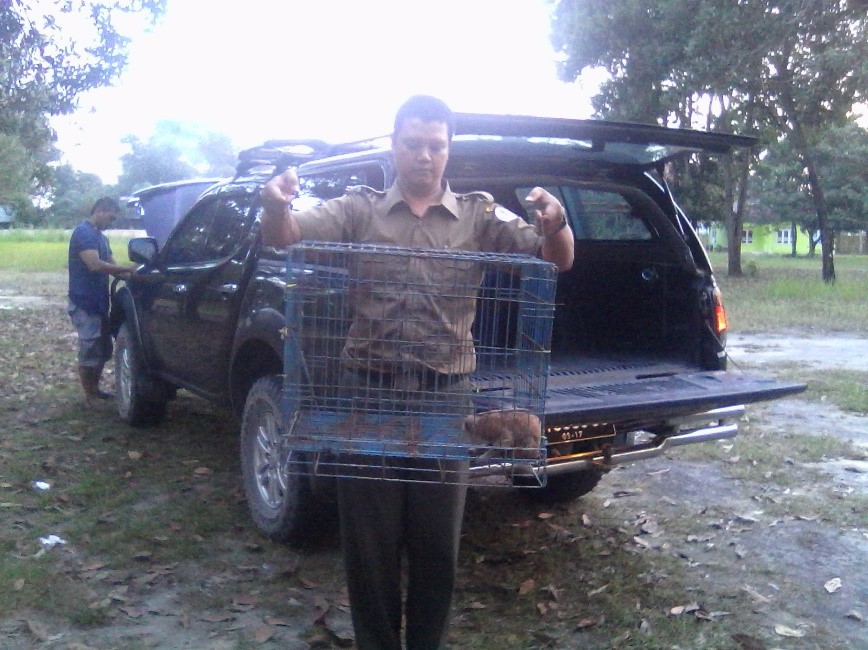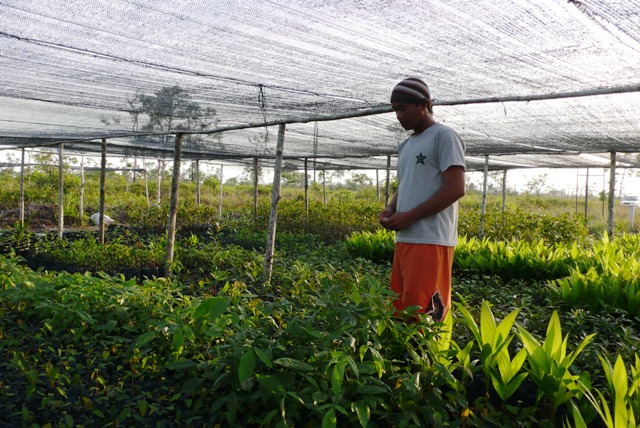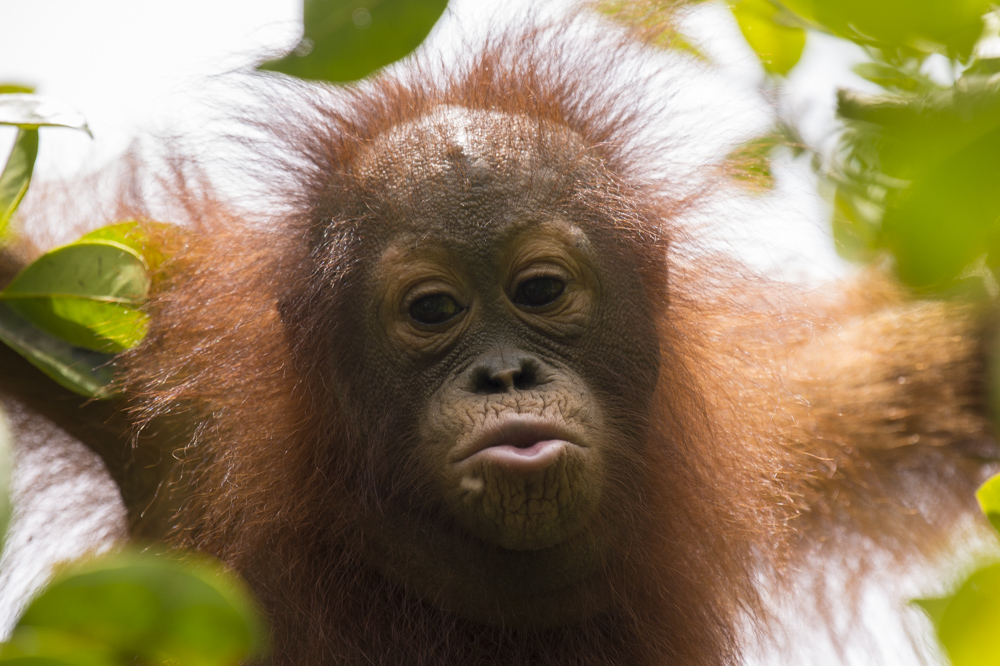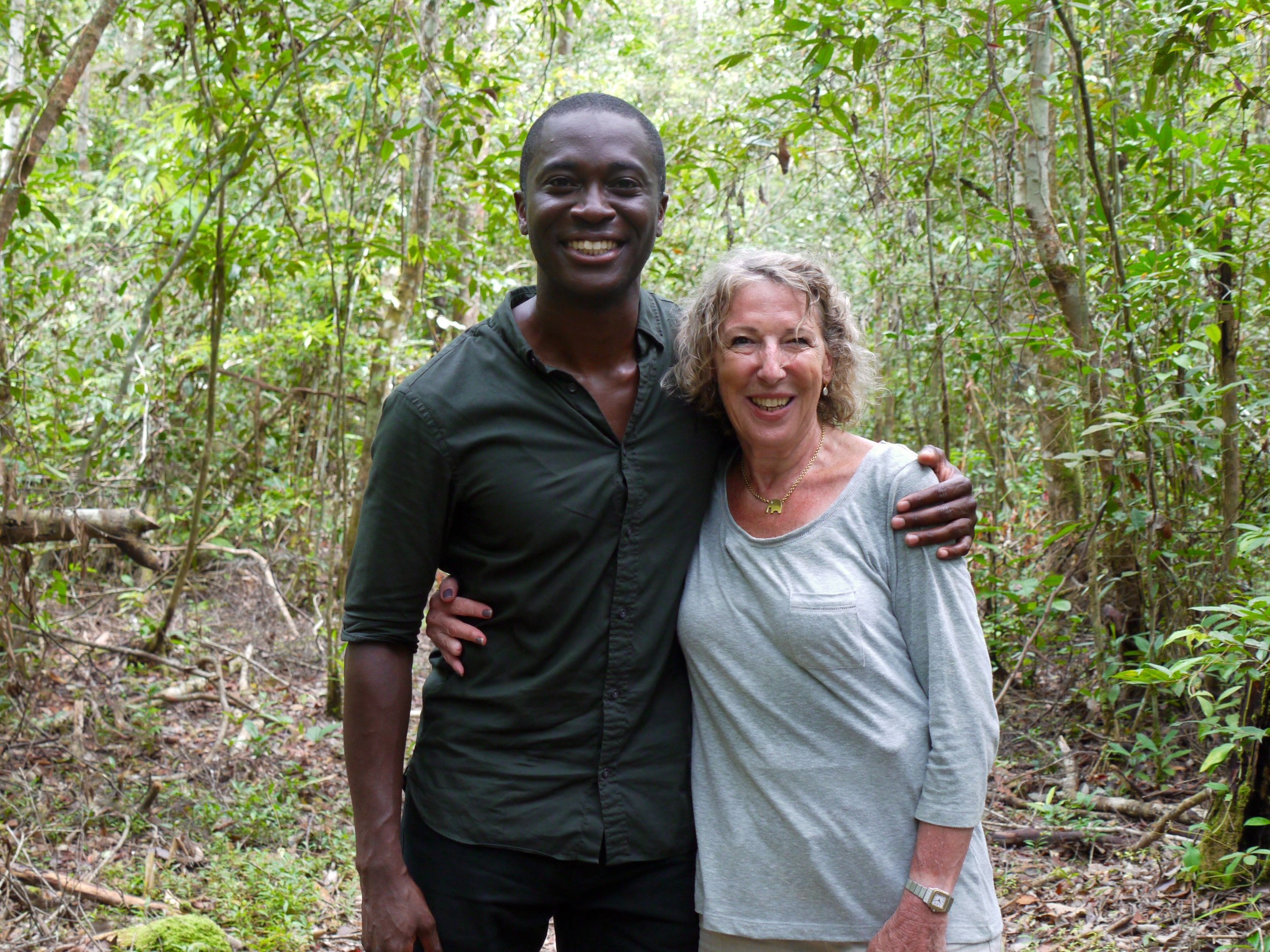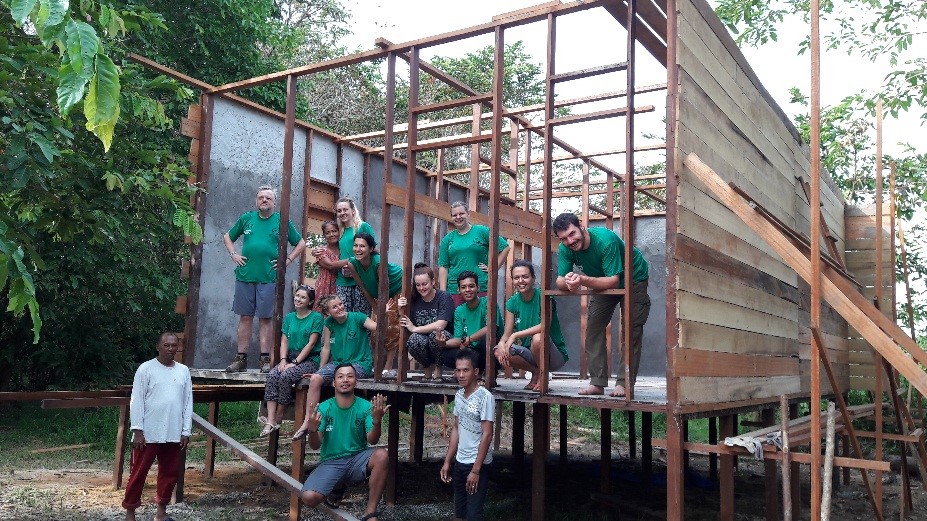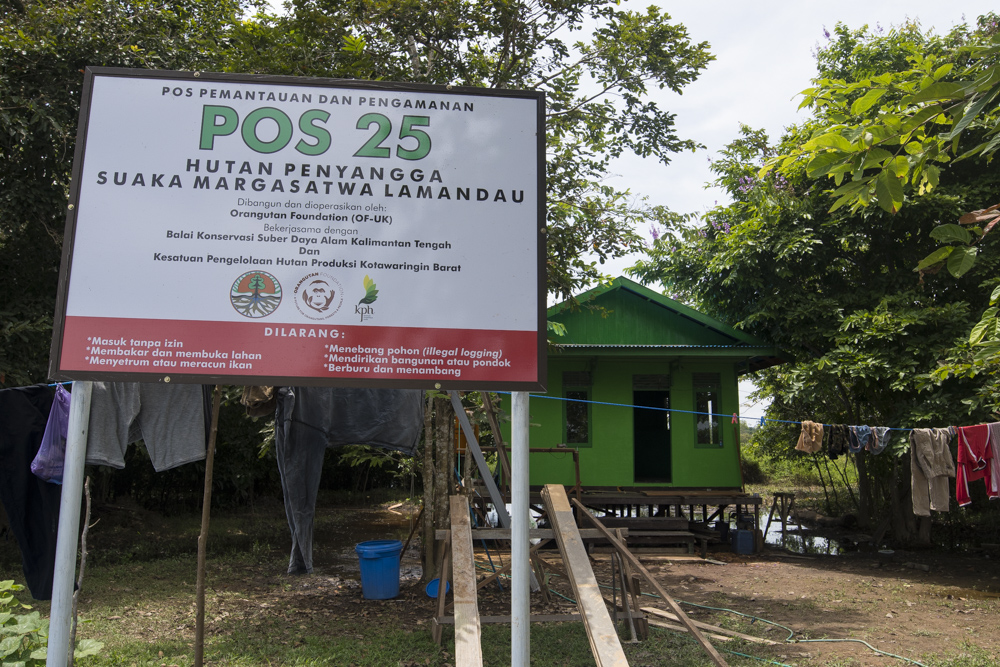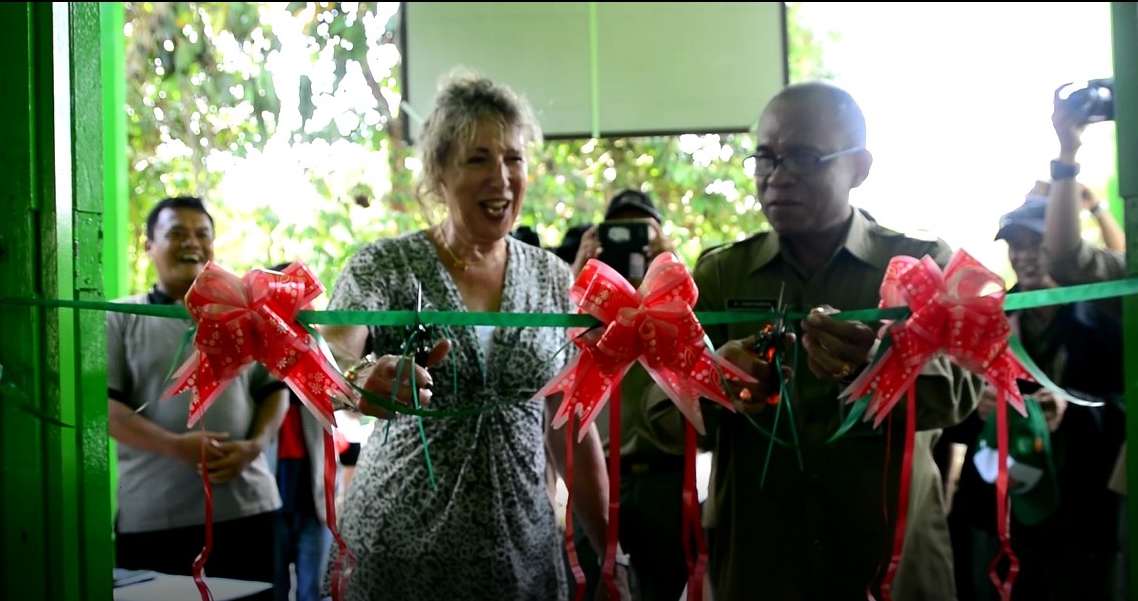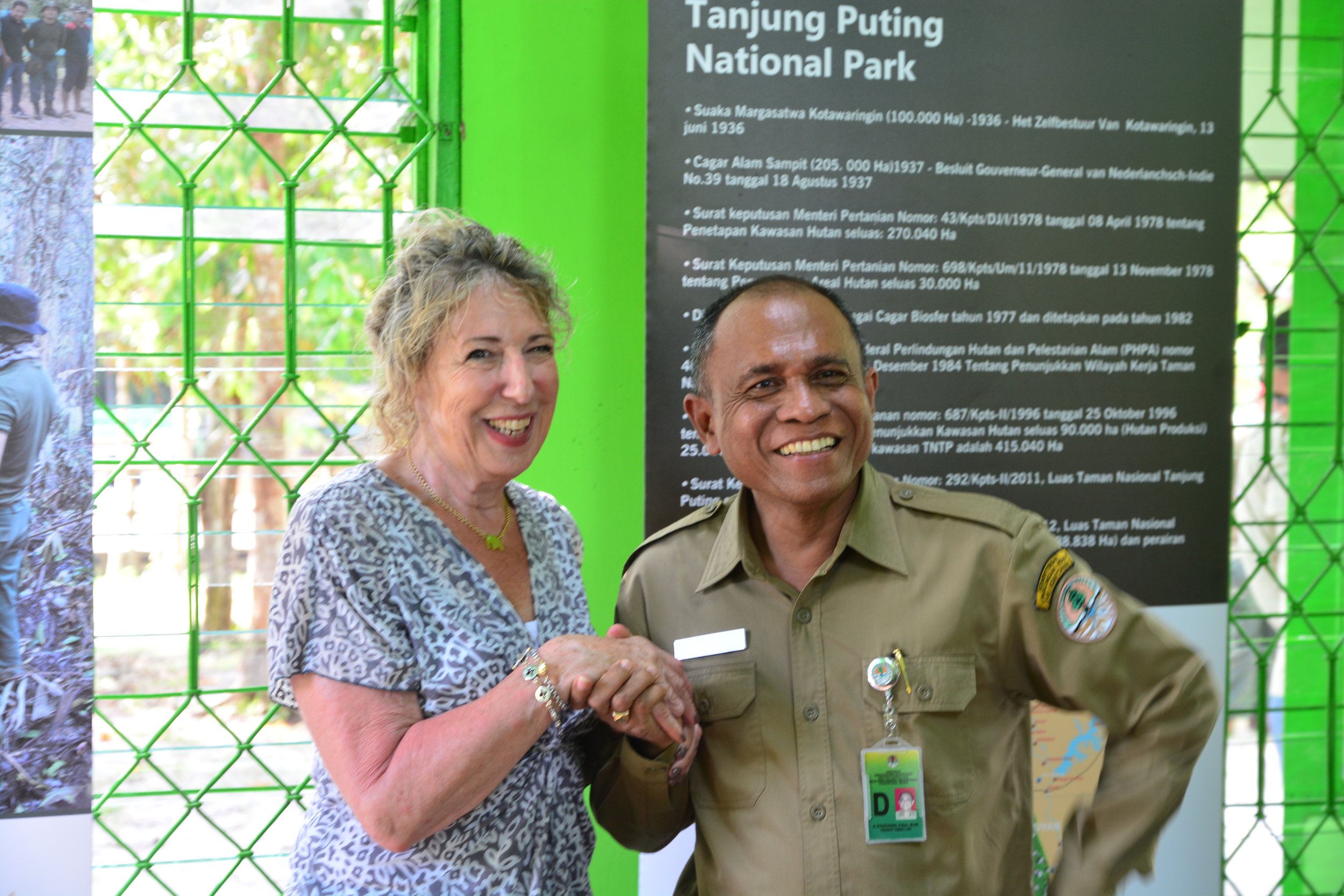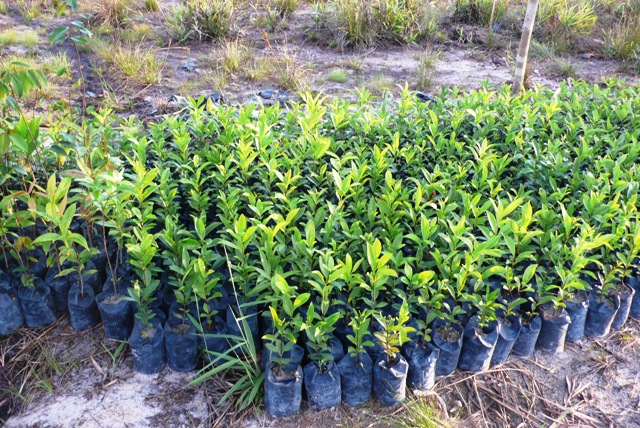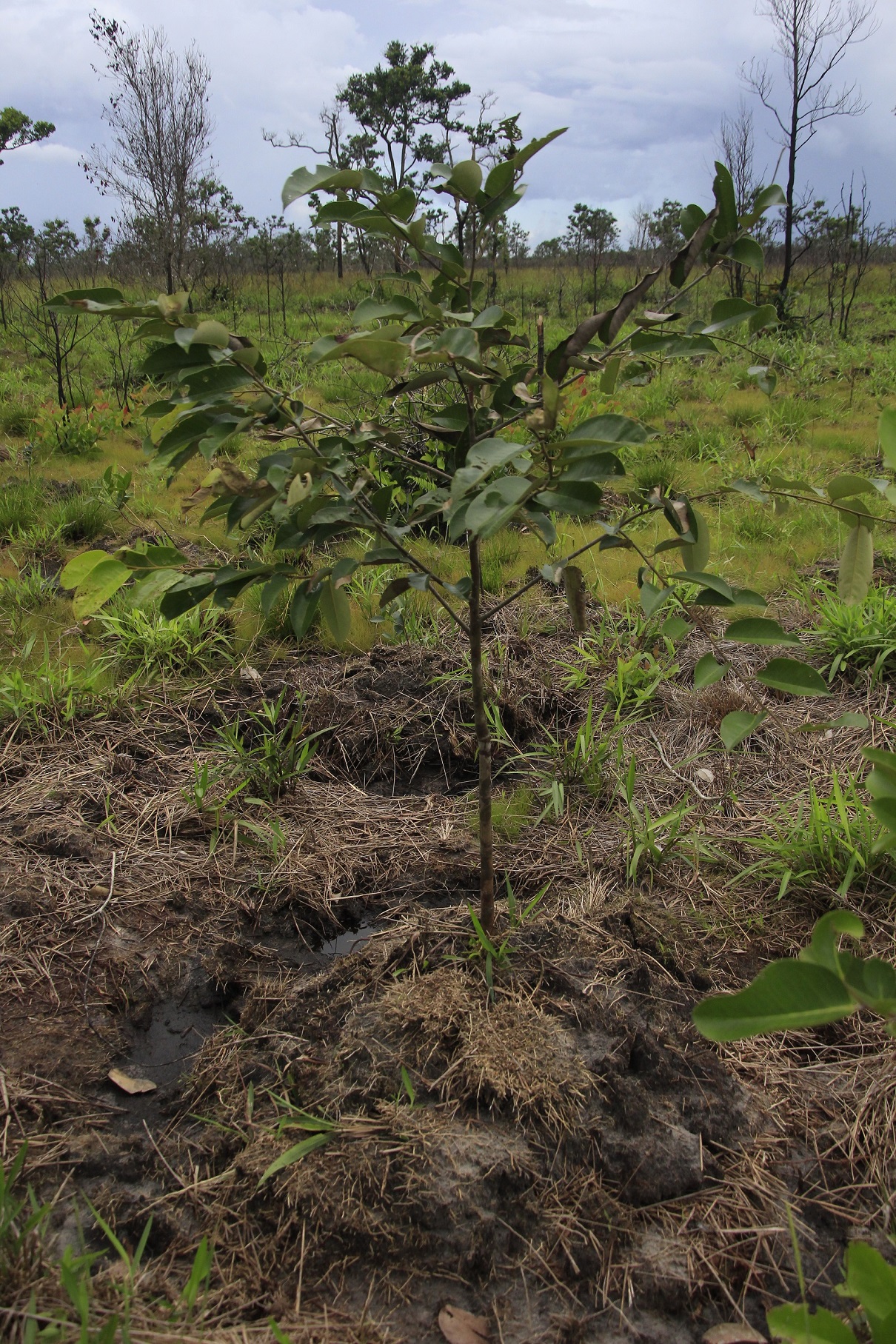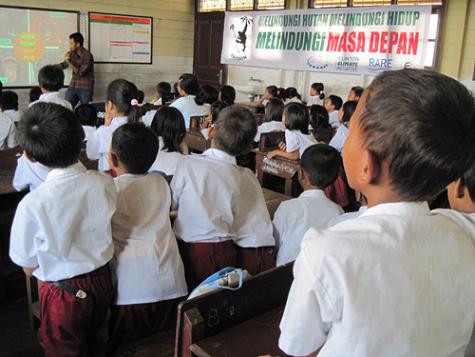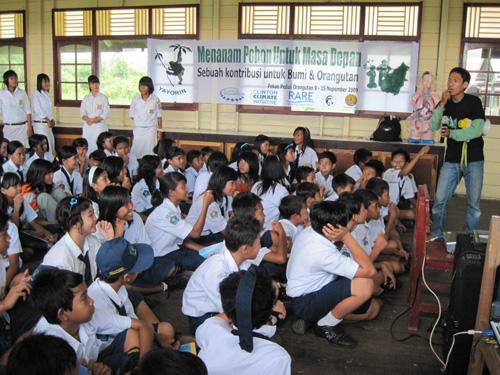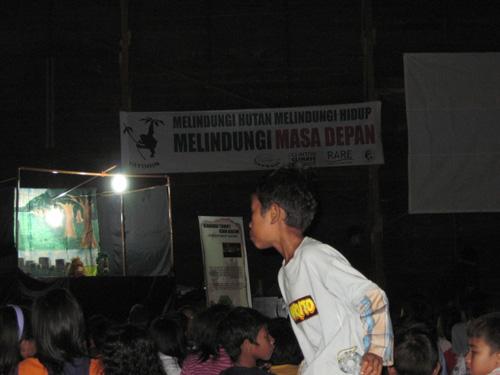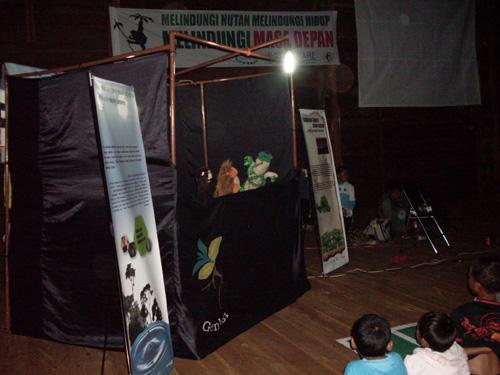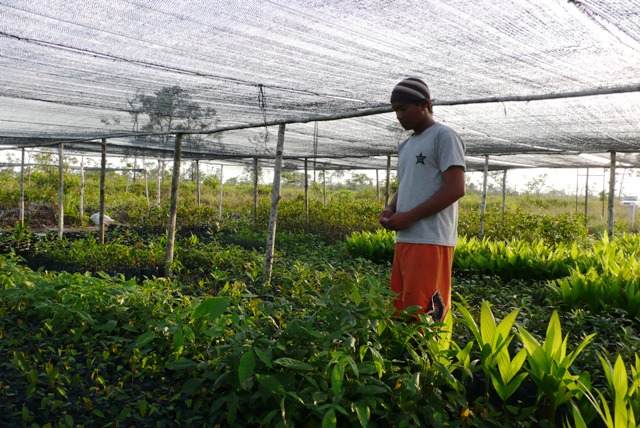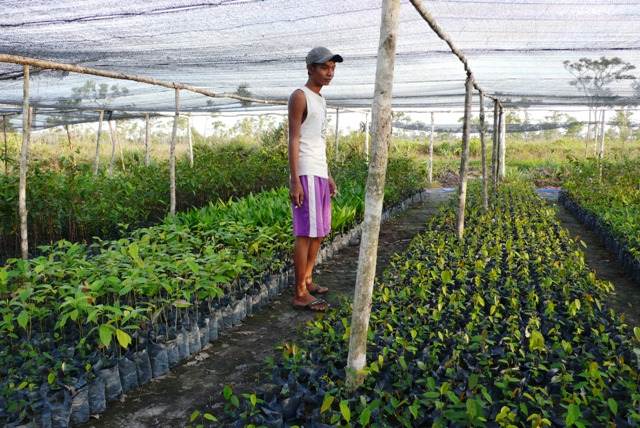The use of drones has been on the rise - they have become critical in conservation, enhancing our habitat protection efforts and changing the way we work.
Stewards of the forest
The protection and restoration of tropical forest habitat remains at the core of ensuring a future for orangutans, not to mention the thousands of other species that rely on one of the planet’s most diverse ecosystems. Fortunately amidst the current climate, our guard post and habitat restoration staff are still hard at work.
By conducting regular patrols, guard posts can monitor and protect orangutan habitat.
Our guard posts continue to record wildlife sightings as they conduct routine patrols on the river and through the forests of the Lamandau Wildlife Reserve. This is an effective strategy to prevent illegal activities such as logging, mining and fishing from occurring within the reserve.
By planting new saplings around forest peripheries, we can restore orangutan habitat previously lost in forest fires. In particular from the large fires of 2015 which decimated vast areas of vegetation.
As well as protecting existing forest, restoring degraded areas of habitat is key to the survival of orangutans and to combat the effects of climate change. Last month from our plant nursery the habitat restoration team carefully chose 16,500 seedlings to be replanted in the Lamandau Wildlife Reserve. The selection process for every sapling is critical as there are a number of factors to take into account before they can be planted in the wild, and it can take many years for tree saplings to grow to a forest canopy level.
Firstly, our team ensure that each plant in the nursery is growing straight, has reached the minimum height, and has green and healthy leaves before they can be delicately transported to their planting site. It then takes time for each sapling to acclimatise to direct sunlight in the nursery. This adjustment will ensure that saplings have the best possible chance to mature into trees which one day could form part of the high forest canopy.
The nine different species chosen by our team are more fire-resistant and therefore have the best chance to regenerate forest that has been destroyed. Selecting the location for each species is also a crucial factor as the soil, water level and surrounding vegetation all influence how the saplings will develop. We will continue to monitor the progress of these saplings and hope that they can form part of the surrounding Lamandau Wildlife Reserve.
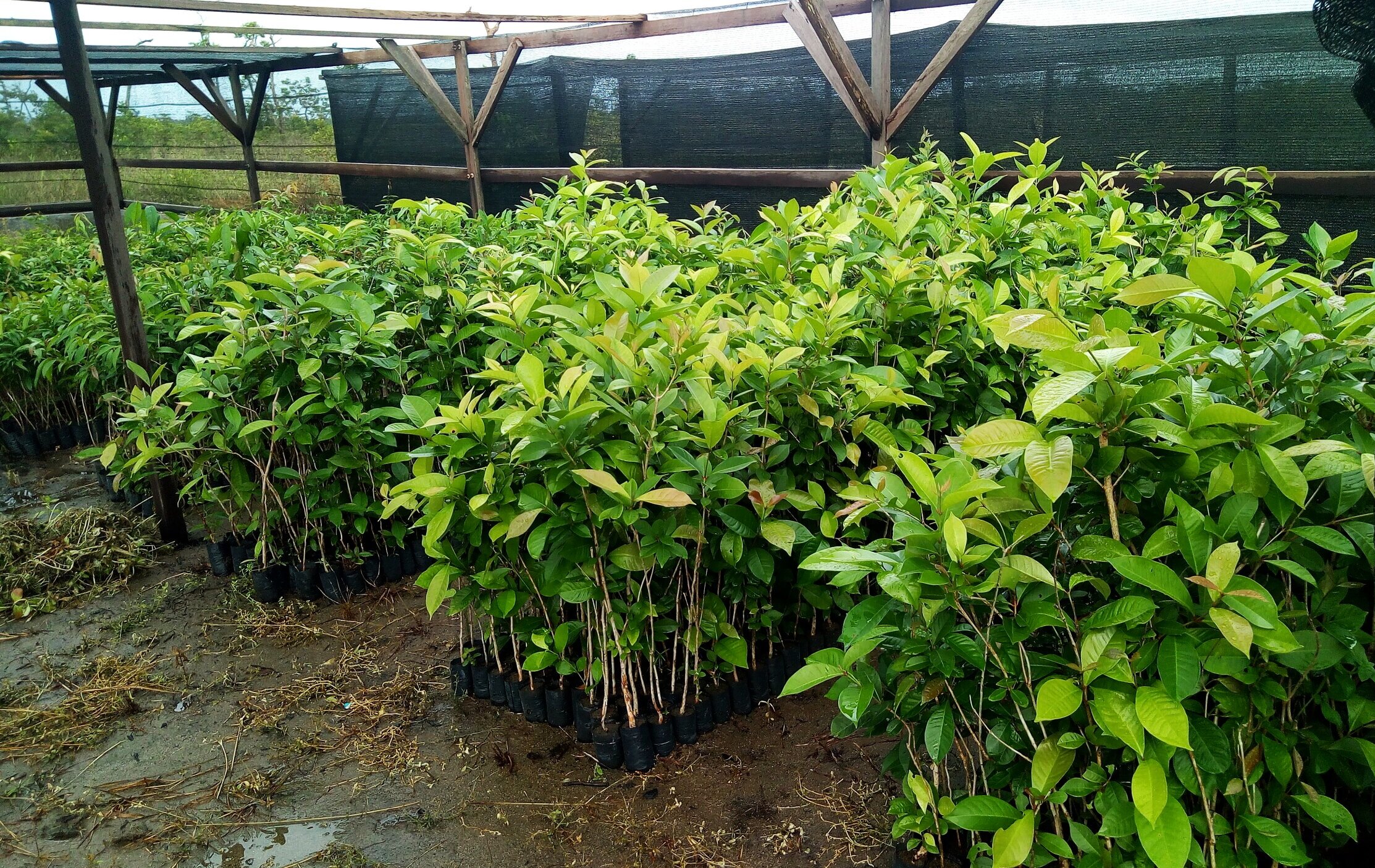

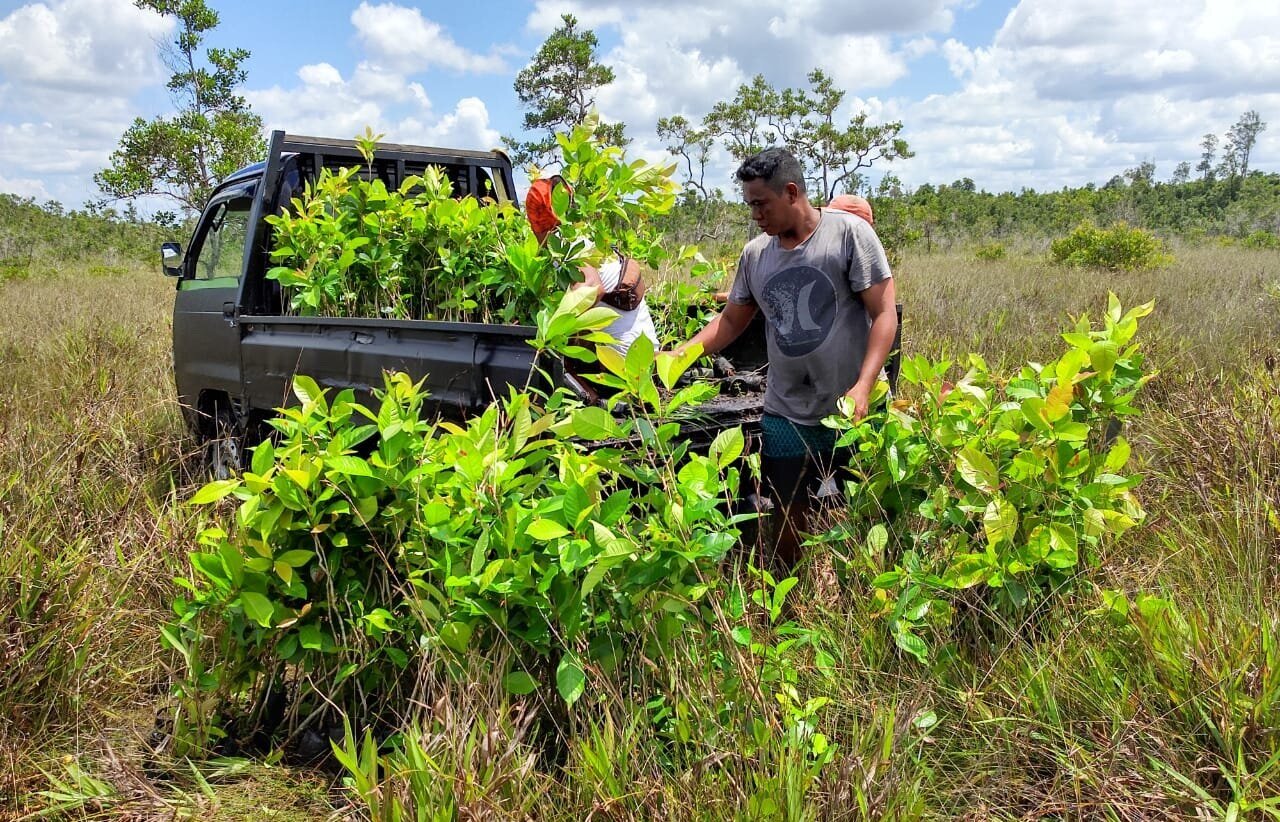
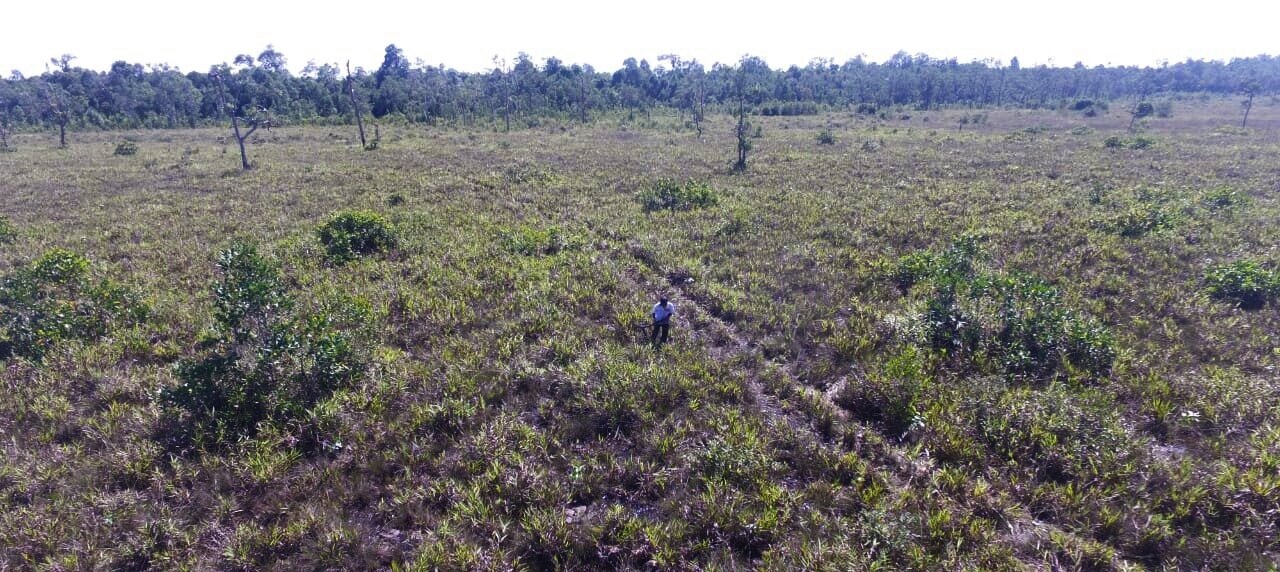
While activities in many parts of the world are currently at a standstill, we are proud that our staff in the field are largely able to persevere with our ongoing conservation programmes. You can help guarantee that these vital programmes continue by participating in a fundraising activity of your choice on Sunday 26th April through the 2.6 Challenge- an event you can complete at home to help UK charities.
Alternatively, you can support our work directly by sponsoring an acre of forest or purchasing an e-gift donation towards our programmes below.
Improving livelihoods of communities living in and close to orangutan habitat
We are working with villages on the border of the Lamandau Wildlife Reserve (Indonesian Borneo) to improve livelihoods and local forest sustainability. In this area, fire is used to cleared land and to hunt wild pig and deer. Forests have been cleared to mine for minerals or to grow oil palm. We see the damage this does to forests, the vanishing habitat of orangutans and other critically endangered species.
Measuring out and survey of agroforestry demonstration plot (oil-palm plantation in the background).
As demand for land increases it is imperative to adopt sustainable livelihoods that don’t require forests to be cleared. Agroforestry has been practised traditionally in Indonesia for many centuries and it can improve farmer’s livelihoods and improve land, which is already degraded. It is a farming system that combines planting trees with agricultural crops to increase profits, both economically and environmentally.
Discussions with land owners and Sukamara KPHP about planting sengon plants in community-owned gardens
The villages we work with have voluntarily offered one hectare (roughly the size of a football pitch) of their land to be used as a demonstration plot and Orangutan Foundation are assisting with the preparation and planting of seedlings and will help to monitor their progress.
Farmers nurturing sengon seedlings for planting out.
Two of the species being grown are rubber trees (Hevea brasiliensis) used for harvesting latex and sengon or albazia (Falcataria moluccana) which is used for local timber products (firewood, matchsticks, construction materials). They are fast growing species and so can be harvested in a relatively short time and they are adaptable to varying climate conditions.
Transporting compost to plant out seedlings
Planting out of sengon seedlings
Planting rubber in the demonstraion plot
The future of conservation is in our hands
The survival of the critically endangered orangutan and its forest habitat lies in the hands of Indonesia's youth. Their opinions, decisions and actions will determine its future existence in the wild. This is why awareness and capacity building is vital to the long-term conservation of this threatened great ape.
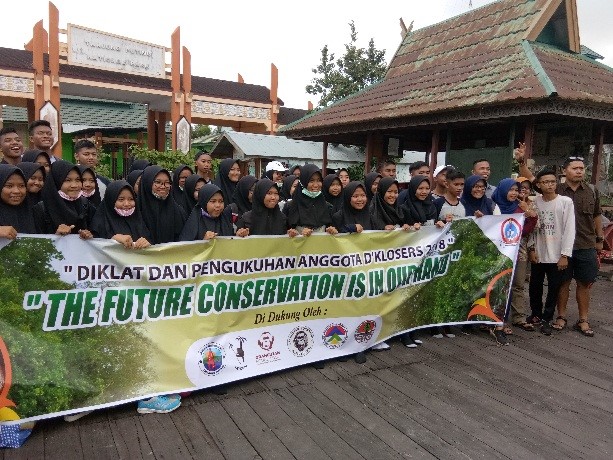
This month the Orangutan Foundation, and other local organisations, delivered a series of lessons to senior school, SMAN 3 Pangkalan Bun (Central Kalimantan, Indonesian Borneo). Our Research Manager, Arie, talked about the importance of research and our work at Pondok Ambung Research Station in Tanjung Puting National Park. The Orangutan Foundation's Forest Patrols Manager, Jakir, led an inspiring session about photojournalism.
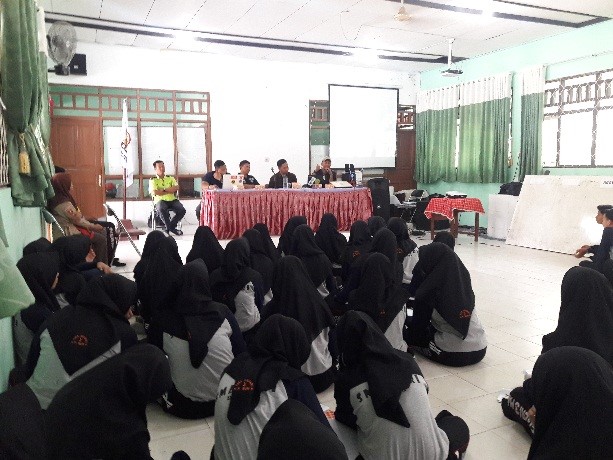
Why is Pondok Ambung Research Station important?
Every few months our staff move camera traps to a different location within the research study site. Just some of the wildlife documented so far includes clouded leopards, sun bears, muntjac, crested fireback (forest pheasant), mouse deer, tree mouse, frogs and pig tailed macaques.
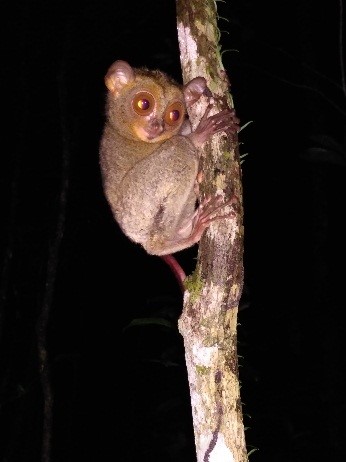
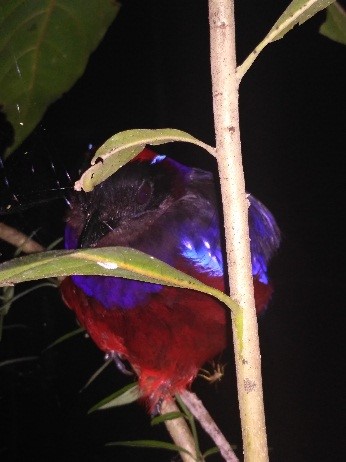
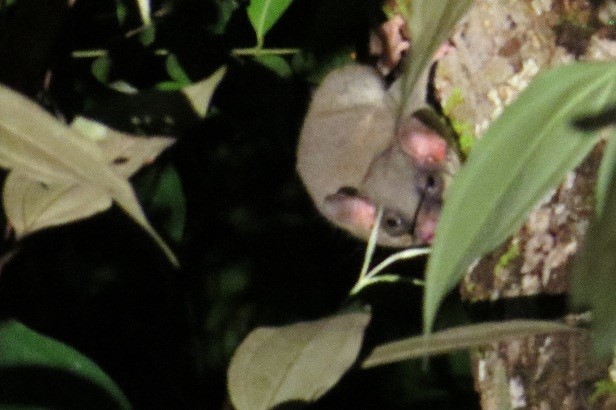
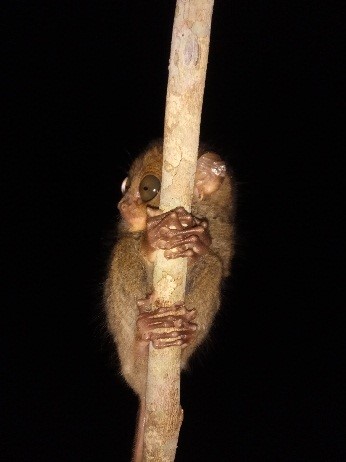
They also monitor tree phenology, recording which species of tree are in flower or fruiting and which consumer species are feeding from them and how often.
Our research station was renovated by last year’s volunteer team and is now much better equipped to hosted visitors. In January, 65 students visited. The students participated in wildlife observations, learnt field skills, watched and discussed a wildlife trade documentary and planted 500 tree seedlings, at Pondok Ambung’s forest restoration site.
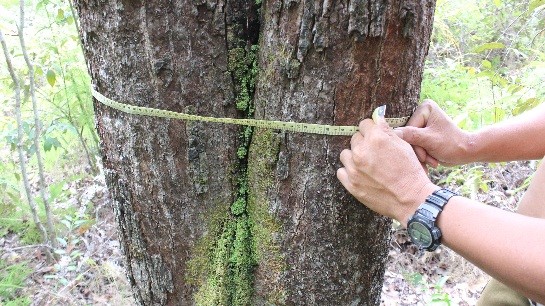
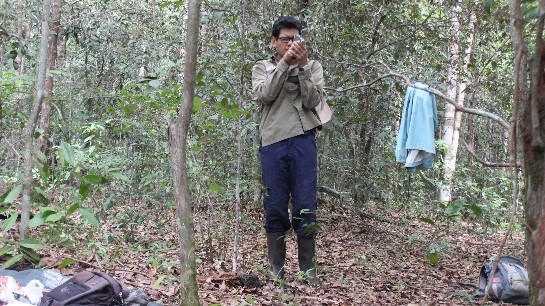
The success of the event was due to the collaborative efforts of Orangutan Foundation staff and other organisations including; Bagas the Traffic / IUCN Redlist Ambassador for Kalimantan; Fajar from OFI, the FNPF, BTNTP and FK3I. The event was supported by the National Park’s tour operators and guides who provided a free klotok (longboat) as did FNPF.
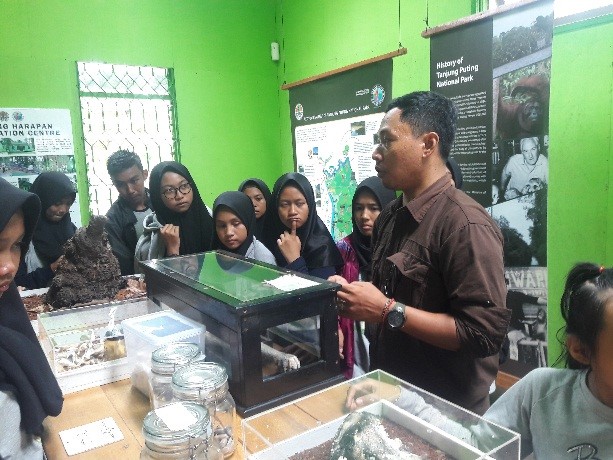
Please donate to support our work - it is needed to secure a future for oranguans, forests and people. DONATE HERE
Why Orangutan Foundation needs your support, more than ever.
If you are a member or supporter you will already know that our priority is protecting orangutan habitat. If we keep forests standing we can ensure orangutans stay in the wild (see video below of wild male). In the past few months our committed Indonesian staff, working on the front-line of conservation, have successfully:
- Detected and prevented illegal activities within two protected areas, home to thousands of Bornean orangutans and many other critically endangered or threatened species.
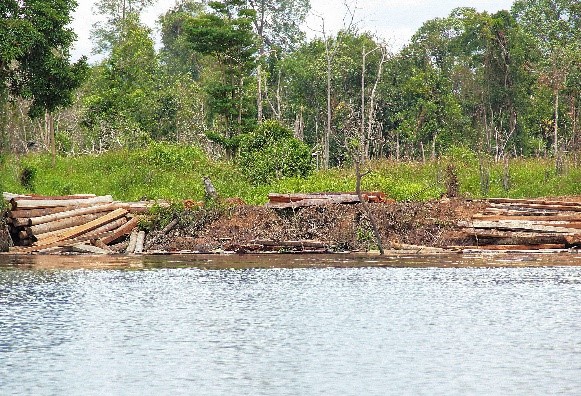
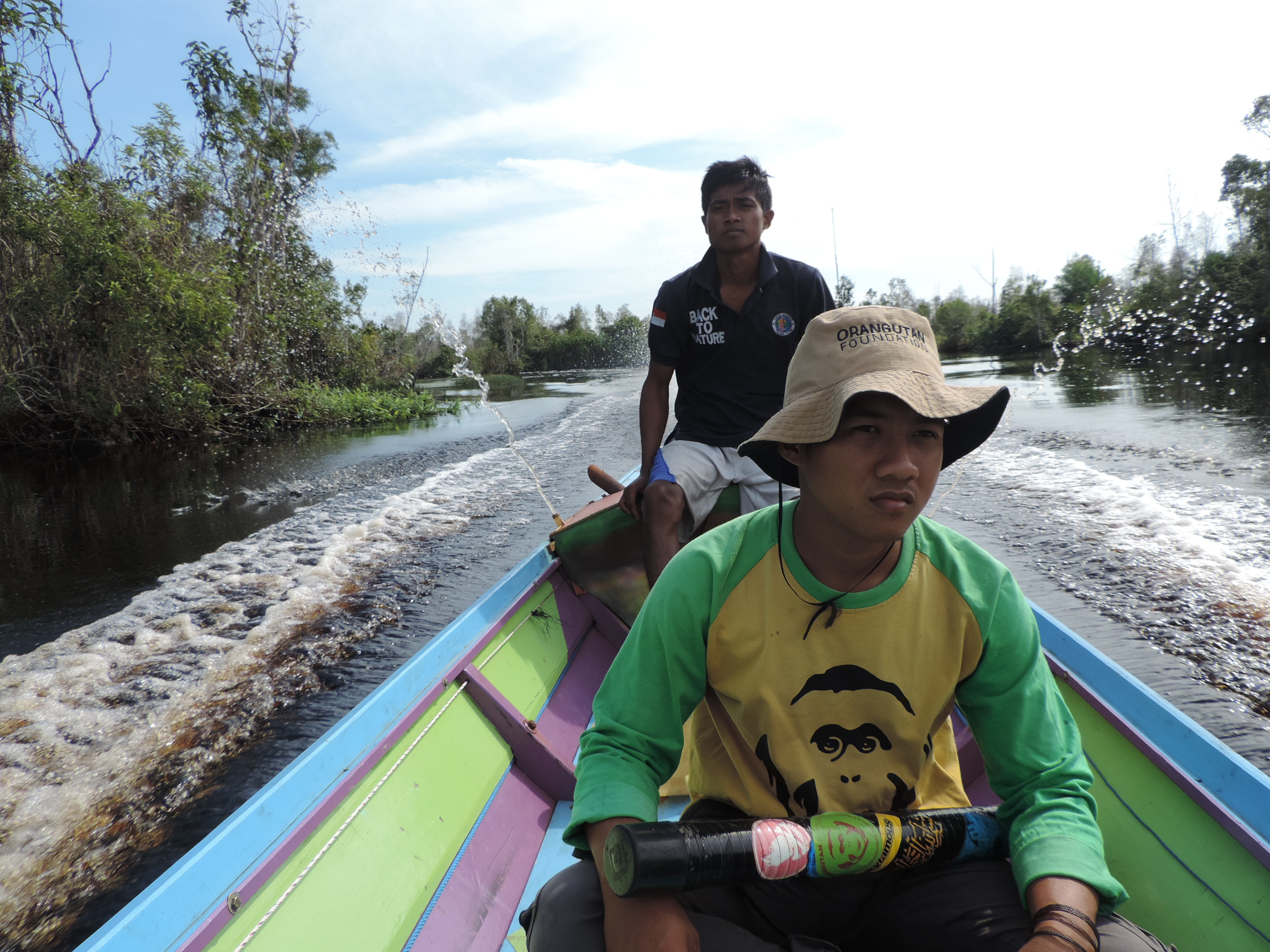

- Prevented the spread of fires to the Lamandau Wildllife Reserve, home to an estimated 500 Bornean orangutans.
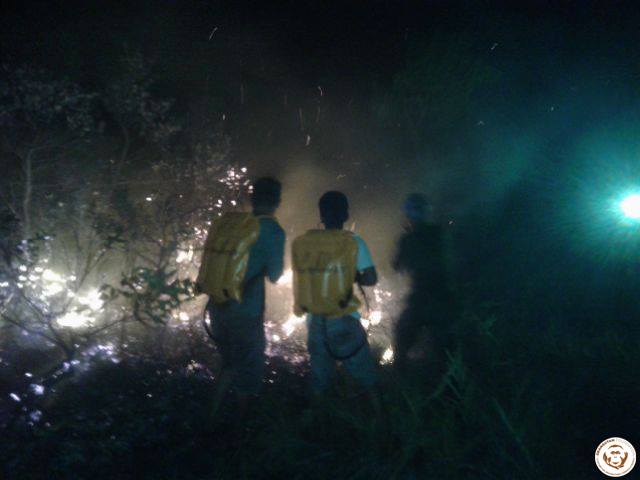
- Nurtured tens of thousands of tree saplings and planted in degraded forest areas of Tanjung Puting National Park and the Lamandau Wildlife Reserve.


- Trained our staff and community to prepare for and tackle fires
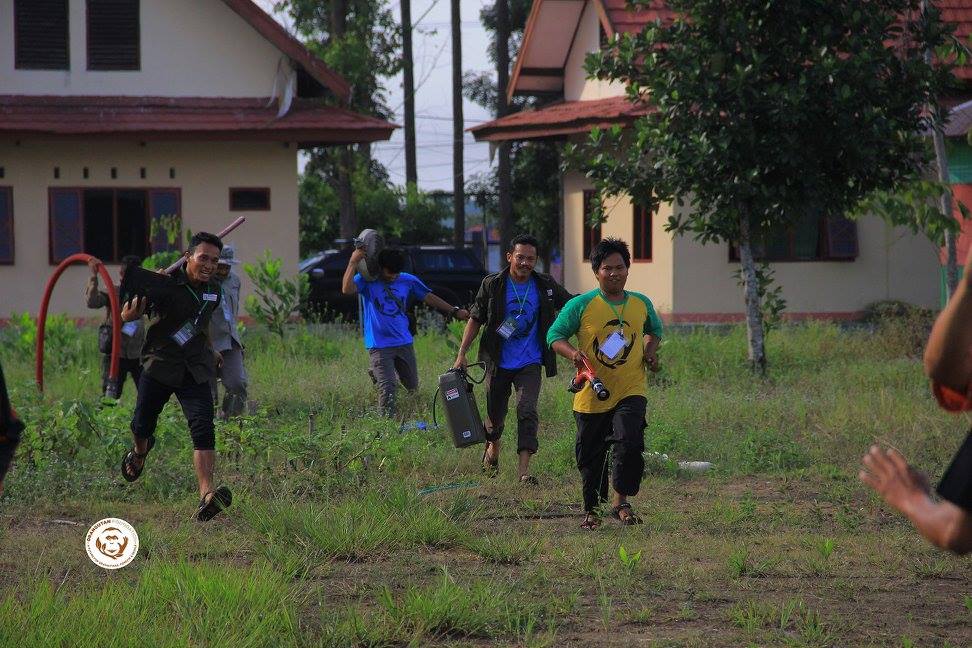
- Engaged with the Indonesian government and companies to implement best forest management in unprotected orangutan habitat.
We do all this so that wild orangutans, like the one below, stay wild.
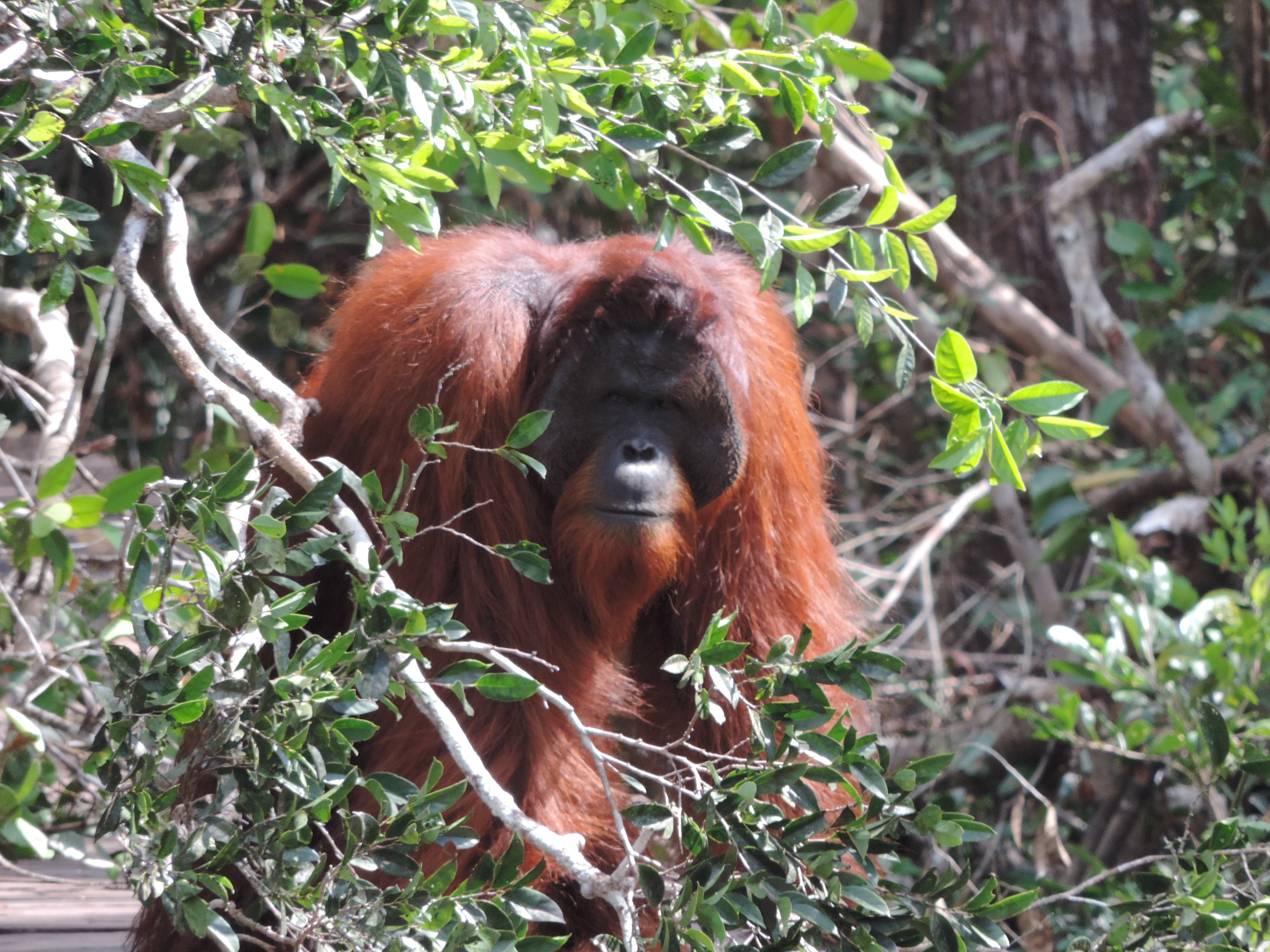
We need your help to continue doing this. If you haven’t already, please consider setting up a regular donation click here to support our vital work. Please also help by sharing this blog post.
Thank you,
From Orangutan Foundation - A future for orangutans, forests and people.
Q&A with the Programme Manager of the Orangutan Foundation
People's Trust for Endangered Species (PTES) have been supporting the Orangutan Foundation's work in Indonesian Borneo for a number of years. We would like to share this Q & A with PTES and our Indonesian Programme Manager, Ade Soeharso, as part of the launch of their new appeal to save orangutan habitat.
Orangutan expert and Programme Manager at the Orangutan Foundation, Dr Ade Soeharso, answers some questions about the lives of orangutans, the dangers they are facing and ways anyone can save them now.
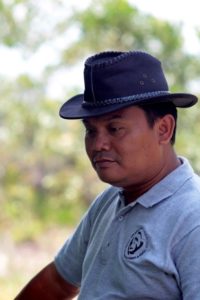
When did you start working at the Orangutan Foundation?
I’ve been a partner of the Orangutan Foundation since 2006. I was still working for the government then. Between 2008-2014 I worked part-time as a technical advisor of the Orangutan Foundation, and since 2015 I’ve worked full-time for the Orangutan Foundation.
What is the ideal habitat for an orangutan?
The ideal orangutan habitat is a mixture of swamp forest, lowland dry forest, and mountain forest. Ideally the habitat would be undisturbed and have an abundance of trees for food and nesting.
What is a protected forest?
In Indonesia, a protected forest is a one where the underlying area is protected from being logged or converted to other uses by land clearing.
What is palm oil? Why is the production of it so destructive?
Palm oil is a vegetable fat produced from oil-palm fruit. Almost all food products and many other common items use palm oil as a raw material. Therefore, palm oil is produced in large quantities because there is a huge market. Unfortunately, production of palm oil requires very large areas and which is achieved by cutting down large numbers of trees, which we call forest conversion and land clearing.
What have you found the hardest thing about working on the project so far?
The conservation of forests and the animals that depend on them is still often seen as less important than economic and development issues. It is challenging to mobilize the support of the parties in forest conservation efforts.
What is causing conflict between wildlife and the human population?
Due to deforestation, the amount of wildlife habitat left is ever decreasing. This means that the potential conflict between humans and orangutans will only increase. Orangutans and many other animals such as crocodiles, bears, and monkeys are forced out of the degraded forest and end up in community settlements and plantations in search of food. Seen as pests, they are often shot. We make sure that where possible, wild animals are translocated back into safe habitat. This is only possible if there is safe habitat left to move them back to.
What do you enjoy most about working with orangutans?
I enjoy it so much when I could see orangutans who have been rescued and then released growing and thriving in well-preserved habitat, successfully raising families of their own.
What time do you have to get up in the morning? Are orangutans early risers?
I get up early at 5:30 am. In the forest, orangutans rise between 5:00-5.30 am and leave their nests to set off in search of food.
How do you manage not to get lost in the forest when you’re following apes?
Basically, when following apes we’re never alone. There are always at least two people. As well as helping record data and times, they are locals who are more familiar with the forests so that we don’t get lost.
How many orangutans have you and your colleagues saved recently?
In 2017, so far we have saved 14 orangutans. Some of them have been released already as they are mature and well enough. The others are in the soft release programme. They are taken out into the forest each day to practice feeding and climbing until they have mastered the basic skills and are ready to be released.
Are you optimistic about the future for orangutans?
I am optimistic that orangutans can still be saved as long as we focus on saving their forests that are an integral part of their lives.
What must happen to ensure their survival?
We have to encourage the creation of sustainable oil-palm plantations and stop forest conversion in orangutan habitat and prevent the occurrence of forest fires. We also have to ensure that law enforcement act so that no more orangutans are traded as pets.
What can our supporters do to help?
As well as donating to this project, if you are buying a product that is made using palm oil, look out for ‘sustainable palm oil’ on the label. Currently, the global area already being used for oil palm production is sufficient to meet our needs without any further loss of forest. It is possible for us to use oil-palm produced from sustainable palm oil plantations and it is something we can all to do.
Please help us to help orangutans today so that they are still here tomorrow.
Vote for orangutans
We are delighted that today's blog post is by Julia Cissewski founder of the German charity Orangutans in peril. Please take a few seconds to vote for Julia and help win €30,000 for orangutans. On 14 July, I visited the Lamandau Wildlife Reserve, Central Kalimantan. Our German charity Orang-Utans in Not e.V. (Orangutans in peril, www.orang-utans-in-not.org/en/) has been supporting the Orangutan Foundation's enrichment planting and forest restoration there for several years.

After a week of intermittent rain, we enjoyed a beautiful sunny morning and first travelled by boat from the town of Pangkalan Bun to Camp Rasak in the Reserve.
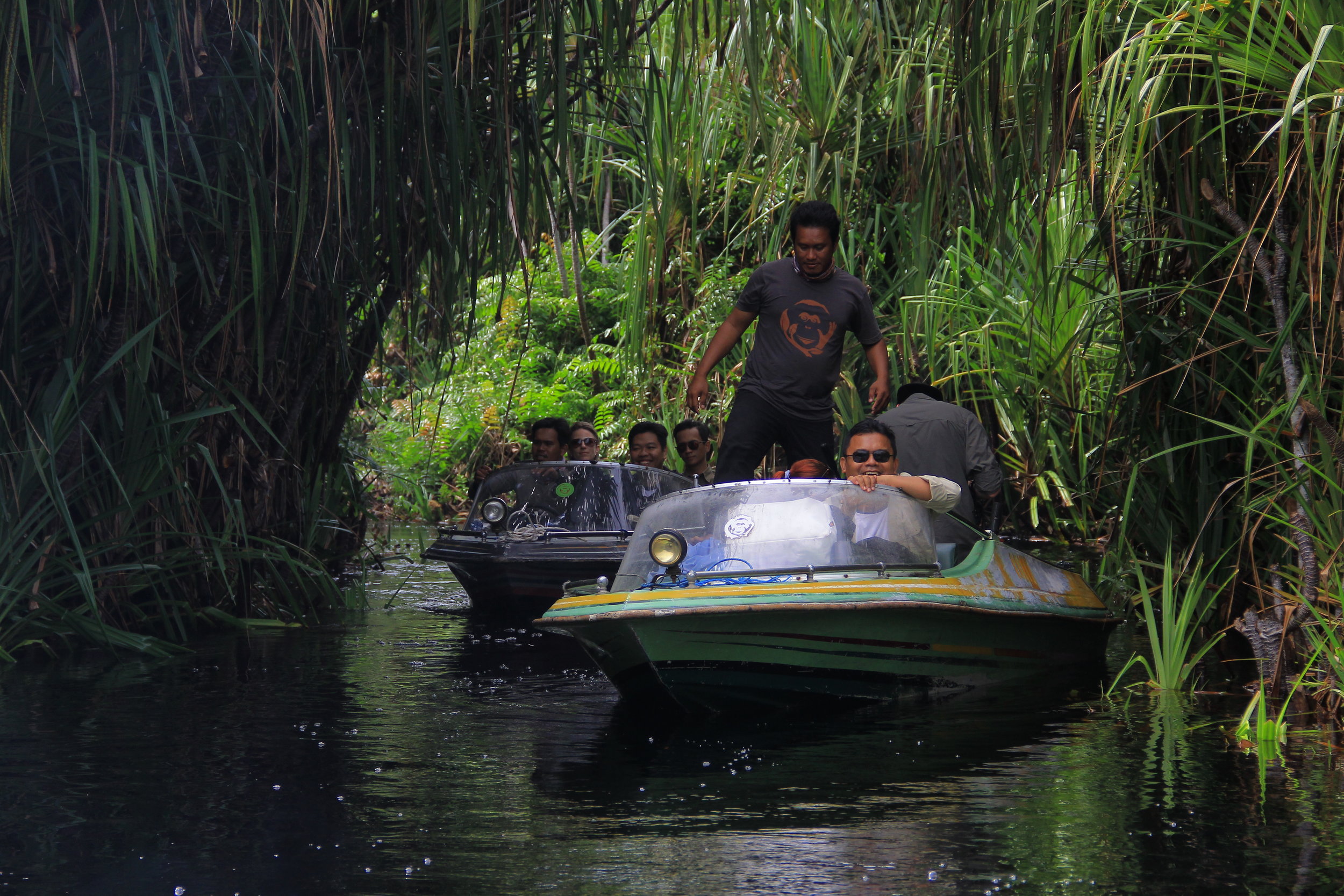
There we visited the enrichment planting area. I last went there in 2012 and now was delighted to see the progress that has been made. The little fruit trees will later serve to feed orangutans in the area.
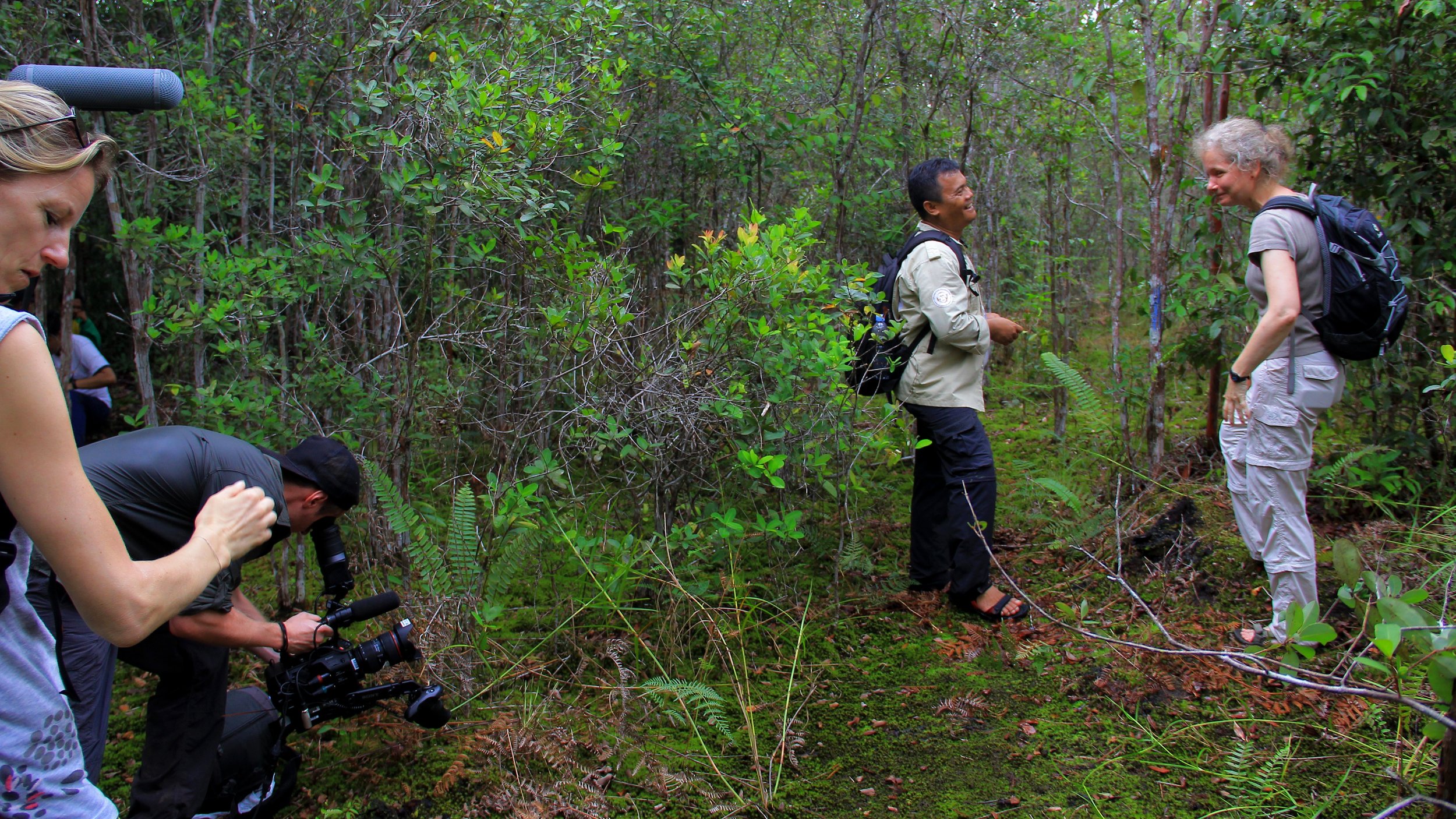
Afterwards we went by boat to Camp Gemini to watch the feeding of released orangutans. The weather kept and it got rather hot. We thus were glad to reach the cover of the release site. At the feeding station we observed several females with their babies, a moving experience. The babies were born in the wild and show the success of the release programme.
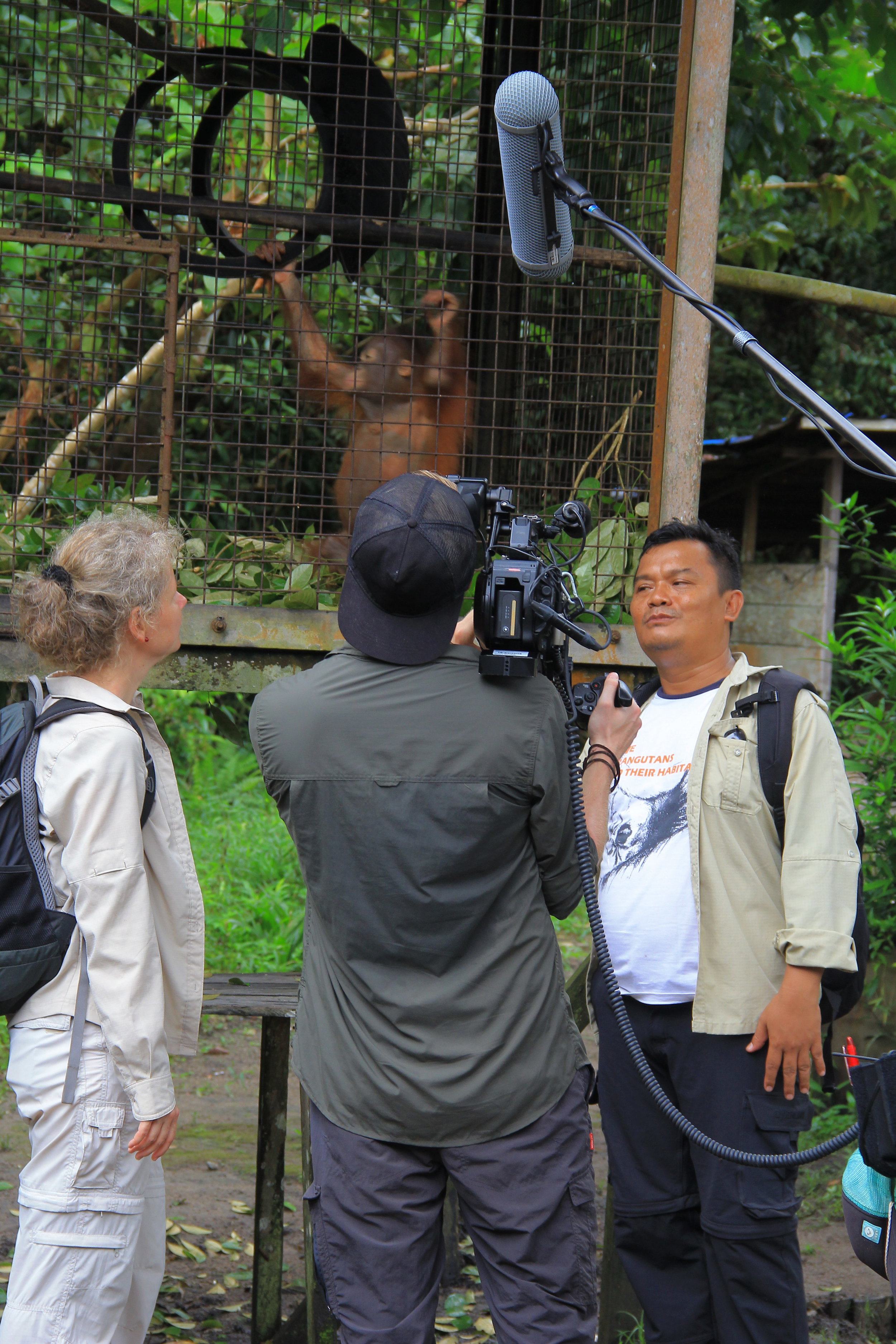

On our way back to Pangkalan Bun we saw several Proboscis monkeys, watching us rather unimpressed from the trees on the river bank. We arrived in Pangkalan Bun when the sun was setting. It was a wonderful day and we gave our thanks to Pak Ade, the program manager, and the other Orangutan Foundation staff. They are doing such great work in Lamandau and we are very much looking forward to our future cooperation.
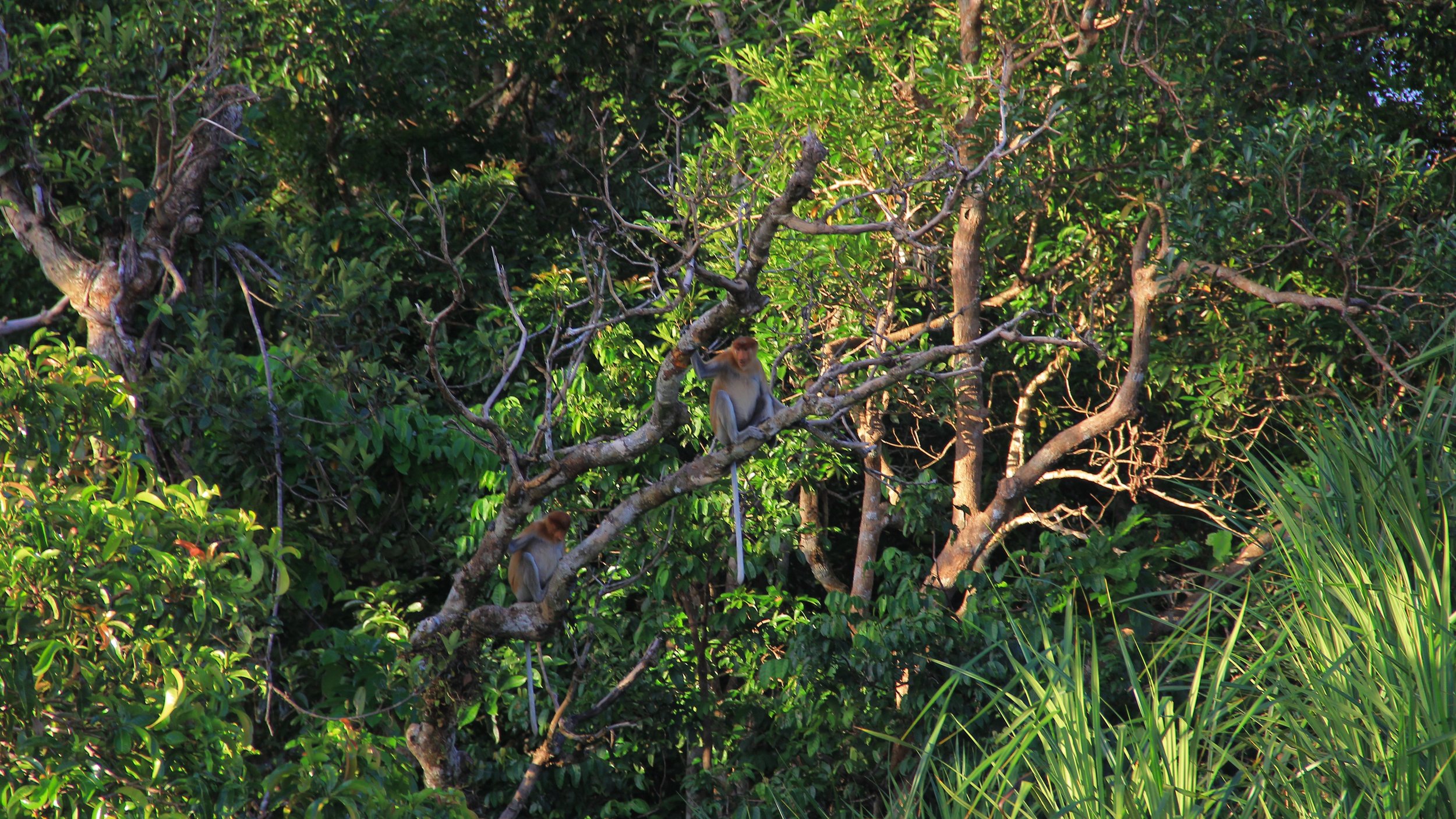
I suppose I should mention that I was accompanied by a film crew who were filming for the German magazine "Bild der Frau". This magazine each year awards prizes to five women running German charities. And in 2017 I am one of them. You can help us gain an additional award of 30,000€ (!) for the orangutans. This award is given to the organization that can raise most votes by October 21, 2017. Every vote counts: https://www.orang-utans-in-not.org/en/goldene-bild-der-frau Thank you very much for your support!
Julia
The Orangutan Foundation's 5 Programmes in Indonesian Borneo
Watch this short video to learn about our 5 ongoing programmes in Indonesian Borneo:
Please help us ensure a future for orangutans, forests and people. To support our work with a donation, please click here.
Thank you.
Orangutan Foundation: 2016 in pictures and numbers. A huge thank you for your support.
 6,000 wild Bornean orangutans live in the Belantikan region. The largest population outside of a protected area. Orangutan Foundation actively engages key stakeholders to conserve this critical tropical forest ecosystem.
6,000 wild Bornean orangutans live in the Belantikan region. The largest population outside of a protected area. Orangutan Foundation actively engages key stakeholders to conserve this critical tropical forest ecosystem. 33 wild orangutans rescued. One particularly poignant rescue was Narti, who was found completely stranded, clinging to the burnt remnants of a tree surrounded by oil palms.
33 wild orangutans rescued. One particularly poignant rescue was Narti, who was found completely stranded, clinging to the burnt remnants of a tree surrounded by oil palms.
 36 rescues of other wildlife species. All released into the safety of the Lamandau Wildlife Reserve.
36 rescues of other wildlife species. All released into the safety of the Lamandau Wildlife Reserve.
 16,000 Ubar tree seedlings nurtured and planted to restore areas of the Lamandau Wildlife Reserve damaged by forest fires in 2015.
16,000 Ubar tree seedlings nurtured and planted to restore areas of the Lamandau Wildlife Reserve damaged by forest fires in 2015.
 One new patron. Patrick Aryee and Offspring Films visited our work in Borneo to film for “Monkeys: An Amazing Animal Family”, a three-part series which first aired on Sky 1, on Christmas day. Star of the show, was Okto who was charmed by Patrick’s presenting skills!
One new patron. Patrick Aryee and Offspring Films visited our work in Borneo to film for “Monkeys: An Amazing Animal Family”, a three-part series which first aired on Sky 1, on Christmas day. Star of the show, was Okto who was charmed by Patrick’s presenting skills!
 Eight volunteers and one new guard post. In July, the construction of Guard Post 25 began. Now up and running, this guard post is critical for the protection of the new 8,000 hectare extension of the Lamandau Wildlife Reserve.
Eight volunteers and one new guard post. In July, the construction of Guard Post 25 began. Now up and running, this guard post is critical for the protection of the new 8,000 hectare extension of the Lamandau Wildlife Reserve.
 Our 25th anniversary year saw the opening of Tanjung Harapan’s Information Centre, in Tanjung Tanjung Puting National Park. Renovated by our 2015 volunteers and designed by the Cube in Residence Programme.
Our 25th anniversary year saw the opening of Tanjung Harapan’s Information Centre, in Tanjung Tanjung Puting National Park. Renovated by our 2015 volunteers and designed by the Cube in Residence Programme.
 104 air rifle pellets were found in lodged in orangutan Aan, 32 of which in her head left her blind, in 2012. In October 2016, ophthalmic surgeon, Claudia Hartley, visited Aan to assess the permanence of her blindness.
104 air rifle pellets were found in lodged in orangutan Aan, 32 of which in her head left her blind, in 2012. In October 2016, ophthalmic surgeon, Claudia Hartley, visited Aan to assess the permanence of her blindness.
The Promise of Nature
Dull and grey, those are the two main words used to describe the cities of the world today. My home is a forest, well it is to me, but to everyone else it’s a colossal, unoxygenated, city of grey. Why they cut down trees I don’t know, probably money. Why is money “so” important to people? I really don’t know? It’s stupid that money is so important to the world, it’s not important, you don’t “need” it to live life happily, all you need is friends and family.
Before they cut it down, the forest was happy and lively. My line of family had lived there for generations and by living off the land they all had happy lives, and I did too until the loggers came…they made me and my friends and family leave the forest and everything I knew and loved.
What happened then I can’t and don’t want to remember, but the one thing that I do remember is that before I left the forest, curse those loggers, I filled a duffle bag full of acorns, just in case.
Turns out I did need them.
When I came back to where I came from, it looked exactly the opposite of how I remember. It was dull and grey, and the only animals were depressed, grey pets, rats and flies, the people were the same as the pets, depressed and grey.
I hated it, the city and the people, but worst of all was the grey. I had to do something then I found it, the duffle bag. Of course, I can plant trees, shrubs and flowers all over the city and maybe, just maybe, all over the world!
I started with my street, planting in every crack in the pavement, in gardens and balconies. Bit by bit, the city began to be more colourful and more importantly, the people were starting to talk and laugh together and be happy. At last my home was happy and lively again. I moved on to another city and did the same and another and another and do on until all the cities of the world were the same as the first one, happy and colourful.
Restoring Orangutan Habitat
We bring you great news from Danau Burung, our guard post in the south-west of the Lamandau Wildlife Reserve!
This area was badly affected by forest fires this summer, intentionally started by local inhabitants. In this area people started fires in the forest to quickly clear land of trees in order to encourage grass to grow, to attract deer and pigs for hunting. Fire is also used to clear land for "slash and burn" agriculture, in order to render it useful for farming. These forest fires caused widespread devastation throughout much of Kalimantan in 2015 following a lengthy dry season, causing them to burn out of control.
Thanks to two grants, from GRASP (Great Apes Survival Partnership) and Orang-utans in Not e.V (Orangutans in Peril, a German NGO) we were able to invest in a forest restoration project to enrich areas that suffered during the fires in 2015. Ubar trees (Syzigyum spp.) were chosen primarily to replenish the area. This is an endemic species to Kalimantan, which grows well in all forest types, and is less susceptible to burning than other species. The leaves and fruit are also a treat for orangutans!
Our partners from BKSDA (Nature Conservation Agency, Indonesia) have provided us with a tree nursery, which our staff are using to plant and grow seeds into seedlings, which are then relocated to areas around Danau Burung. Our Orangutan Foundation staff have now planted 1,500 seedlings in the area to restore the now barren areas of land. Our target is to plant 5,000 seedlings in the Danau Burung area, and with this news we can successfully acknowledge that we are a third of the way towards reaching our goal!
Forest restoration is paramount to the long-term survival of orangutans. If forest habitats are lost, orangutans cannot feed or protect themselves, and populations will perish as a result.
To DONATE towards our forest restoration project, quote "FOREST" with your donation! All contributions are greatly appreciated!
Camera trapping to save species
The Orangutan Foundation are proud to be partners of a groundbreaking Camera Trapping Project with Yayasan Orangutan Indonesia (Yayorin) and The Orangutan Tropical Peatland Project (OuTrop) - allowing us to document animals that have never been seen before in the remote and highly diverse area of Belantikan Hulu. Here, Susan Cheyne, co-coordinator of the project, tells us about the initial results... Check out the stunning footage we got; sun bears here, an orangutan here and a pangolin here.
The Belantikan-Arut area in Central Kalimantan, whose core area is Belantikan Hulu, is a spectacular landscape spanning 5,000km2 hectares across Central and West Kalimantan, is known to contain the largest single population of orangutans outside of protected areas.
The results of this work are very exciting. Not only were Sunda clouded leopards confirmed in this forest but also the elusive banteng. The banteng is a large and rare wild cattle species and is endemic to Borneo but is not widespread across the island.

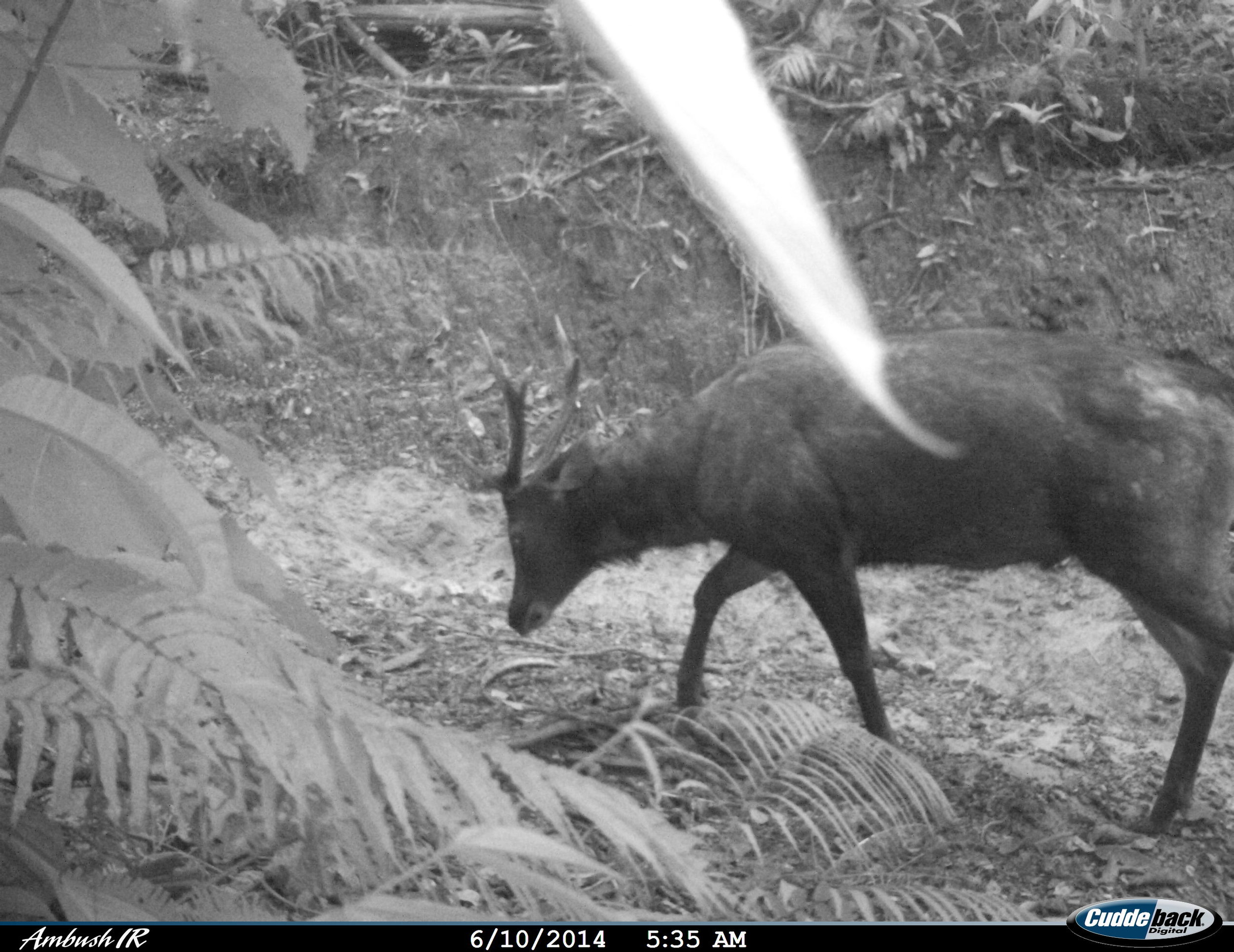
Of course orang-utans featured on the camera traps, adding to the recent information that the man of the forest in fact spends a lot of time on the ground. Not only were large males caught on camera but juveniles and mothers and infants travelling on the ground.
Of great interest is the number of deer and bearded pigs especially the majestic Sambar deer, largest of the 5 species on Borneo. Good eating for a clouded leopard!
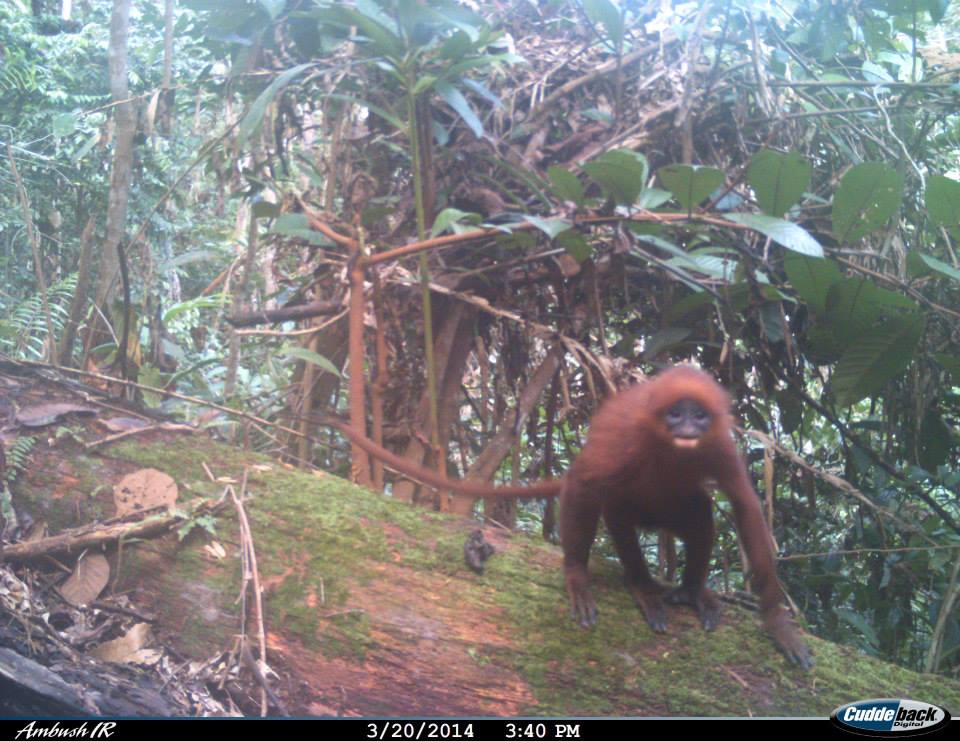
The white-fronted langur (see closely related species - the red langur - pictured above) is normally swinging up in the canopy, but like many primates, also comes to the ground. This species has a very patchy distribution across western Borneo and confirmation of the presence in Belantikan is important new information.

Sun bears are the smallest of all the world’s bears and have the longest tongue of any bear! Females generally have 1-2 cubs each year. We were fortunate to have surveyed during the time of year when cubs are venturing out and about with their mother and captured some wonderful photos and videos of their interactions.
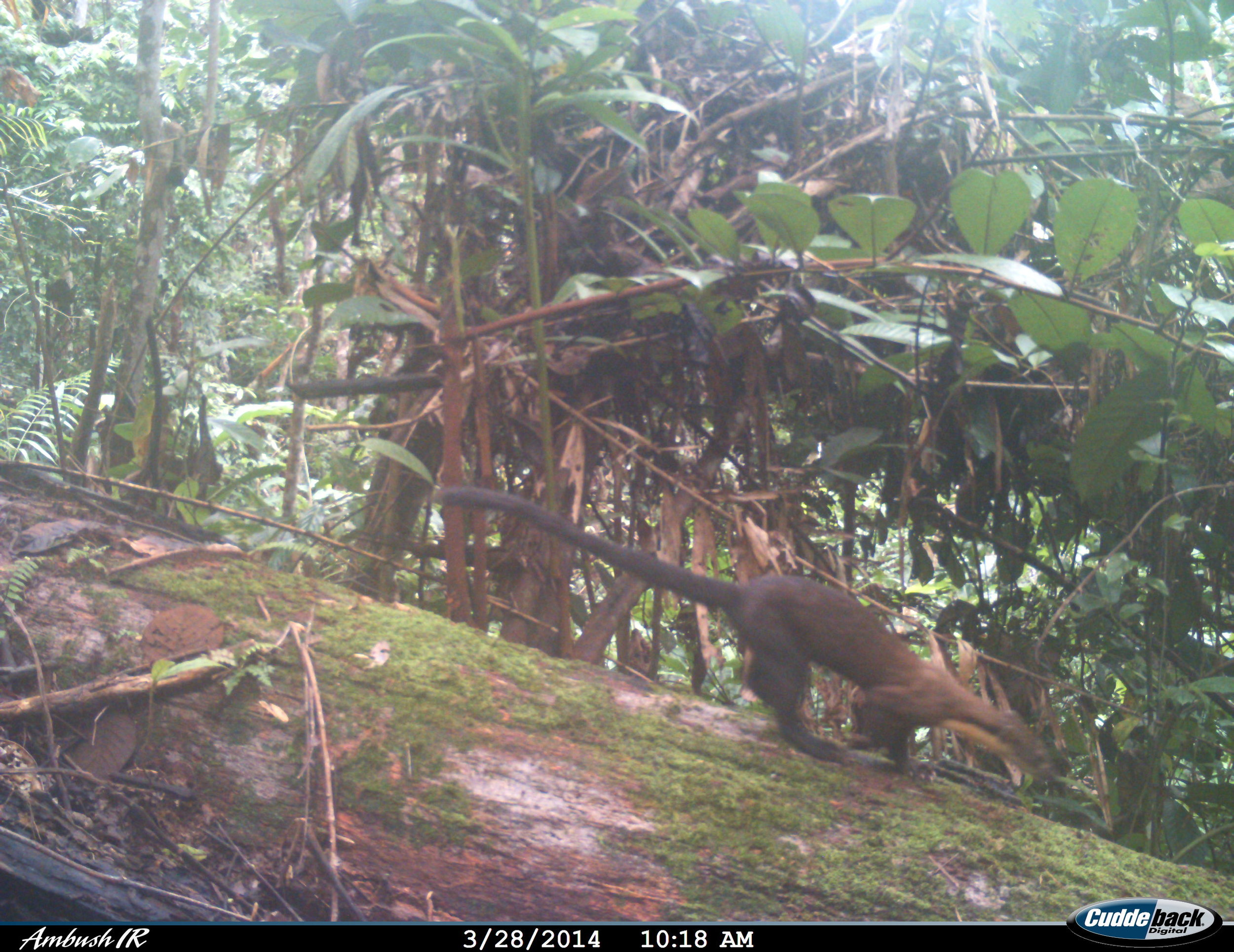
The little yellow-throated marten is apparently widely distributed throughout Borneo but not much is known about these animals. Living alone or in pairs, they are active at both day and night. Although listed as IUCN Red List Least Concern, nothing is known about the population numbers on Borneo.

Camera traps provide an amazing and unique view into the wildlife of the forests we are working to protect. Almost each photo provides new information about behaviour, distribution or activity of these animals."
Check out our recent blog for more amazing photos, or get in touch about any of our projects!
Reforestation in the Lamandau River Wildlife Reserve
June Rubis, our Programmes Manager, has sent an update on our reforestation programme in the Lamandau River Wildlife Reserve, Central Kalimantan, Indonesian Borneo. The internet connection from Pangkalan Bun, the town where our Indonesian office is based, is very slow and unreliable at the moment, so sending photos is proving a real challenge – all our staff in Indonesia deserve medals for their patience! Just quickly though we'd like to thank those who have recently left comments, especially Linda who mentioned our orangutan adoption programme. If you're interested in supporting our work in this way then please contact our partners, Care for the Wild International - adoptions make a wonderful gift!
Thanks also to Charmaine for giving our Volunteer Programme a plug! We still have places available on Team 1, which runs from the 1st May to 12th June. If you want to visit Borneo, help in a direct and practical way and have an experience of a life time, then please get in touch with us.
Reforestation in the Lamandau River Wildlife Reserve –by June Rubis
In 2009, with funding from the European Commission, we have successfully rehabilitated 120.5 hectares (with 34,834 seedlings from indigenous plant species) within the Lamandau River Reserve.

Taking out Seedlings to be planted in the reserve

Seedlings

Carrying seeds to be planted

Filling polybags

Planting seeds into polybags
We have also planted 10,516 pinang species (type of palm) as a living reserve border at Sukamara. As well, we have planted 1200 seedlings at the 500 m buffer zone that surrounds the Reserve.

Watering seedlings during the dry season.

Planting seedlings into polybags

Transporting seedlings from Post Perapat.
Our current plans for 2010 include, rehabilitating up to 30 hectares of degraded land at the village forests outside the reserve. These are the same villages that we have been assisting in finding alternative sustainable livelihoods. The tree species chosen for this tree-planting project will be decided upon after discussions with the local communities.
All our thanks,
Orangutan Foundation
Orangutan Awareness in Borneo - ‘planting trees for the future’
Togu Simorangkir, director of Yayorin (Yayasan Orangutan Indonesia), our local partners, sent through some photo’s of their Orangutan Awareness Week activities. Yayorin's theme for Orangutan Awareness Week 2009 is ‘Planting trees for the future’. They are targeting villages surrounding areas of orangutan habitat.
School Presentation - photo © Yayorin
Their school campaign involves presentations, mobile library, film show, quiz and games.
Quiz and games - photo © Yayorin
Mobile library - photo © Yayorin
At the community level they have organised an exhibition, puppet show and film show.
Film show - photo © Yayorin
Puppet show - photo © Yayorin
On Sunday 15 November, Yayorin we will be planting trees in Tanjung Putri village and in the Lamandau River Wildlife Reserve buffer zone. In total about 1500 trees will be planted by students and communities.
Seedlings to be planted - photo © Yayorin
Yayorin will also be promoting “cheap in your own land” - a campaign to change the slash and burn agriculture method to sustainable permanent agriculture.
Yayorin's Orangutan Awareness Week 2009 badge 'planting trees for the future', which they produce and give away for free.
We'll post about what we've been up to in the UK tomorrow, Orange for Orangutan Day - go on, go orange and support our work, it's not too late!
Thanks,
Cathy
Orangutan Foundation - UK office
Reforesting Orangutan Wildlife Reserve
Recently I accompanied a logistic run to one of our guard posts, Pos Danau Burung (or Bird Lake Guard Post - where the the recent fires were), in the Lamandau Wildlife Reserve.

Getting supplies to Pos Danau Burung
We also had a surprise for them - lots of cake, from our previous meeting with government officials at nearby town of Sukamara. They were very happy with the impromptu tea!
Post Danau Burung also happens to be one of our plant nurseries for reforestation at the Reserve. Our Reforestation Manager, Pak Isem, recently bought more seedlings from local villagers, totalling to about 20 different indigenous species of plants, including fruiting trees that will eventually help feed the orangutans and other wildlife in Lamandau.
As you can see from the photos, the seedlings are doing very well. Currently, we are waiting for the wet season so we can plant these seedlings.
As well, we do need your support to help run our various programmes in Lamandau. With only US$15, you ensure that our field assistants are well-equipped. A donation of US$30 strengthens morale in our camps, with staff uniforms. Take a look at our donation box, and see what you would like to support! Thank you very much Matthew K, Brigitta S and Tal B for your monthly donations.
Thank you,
June



